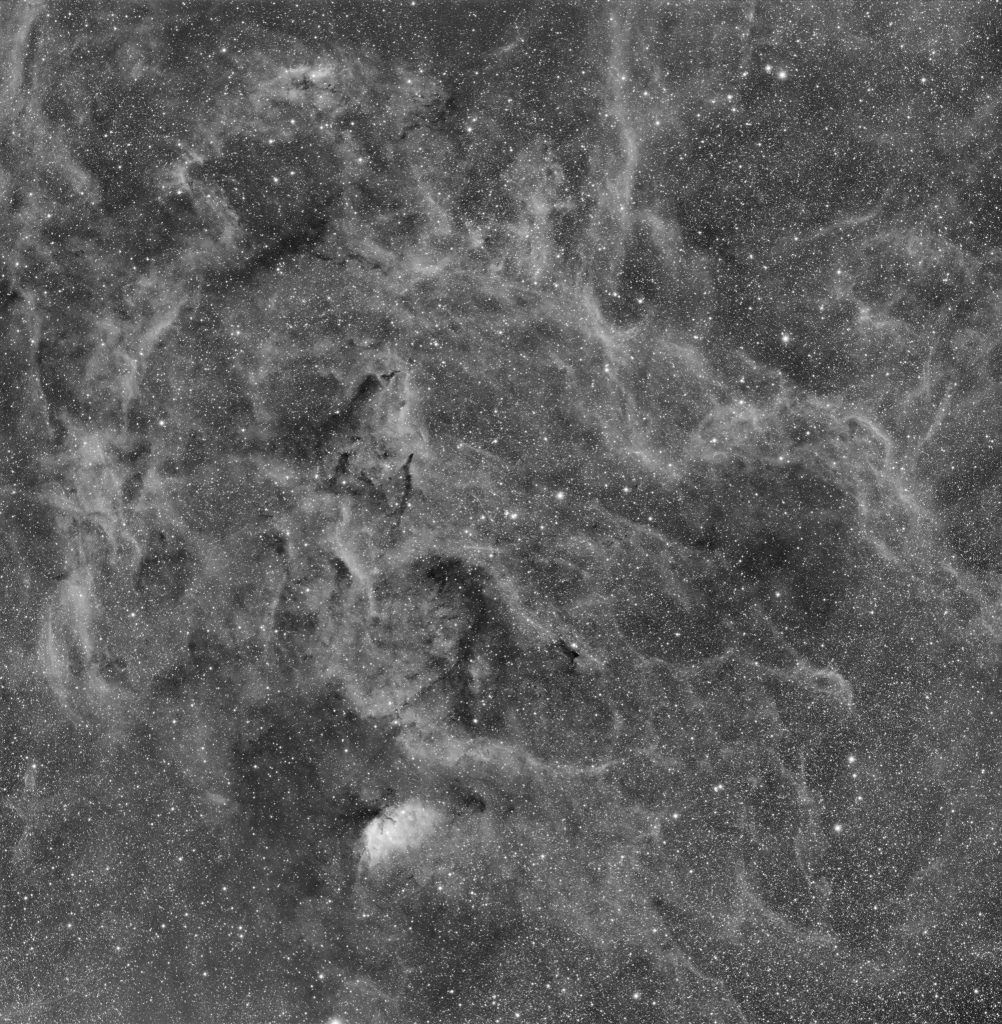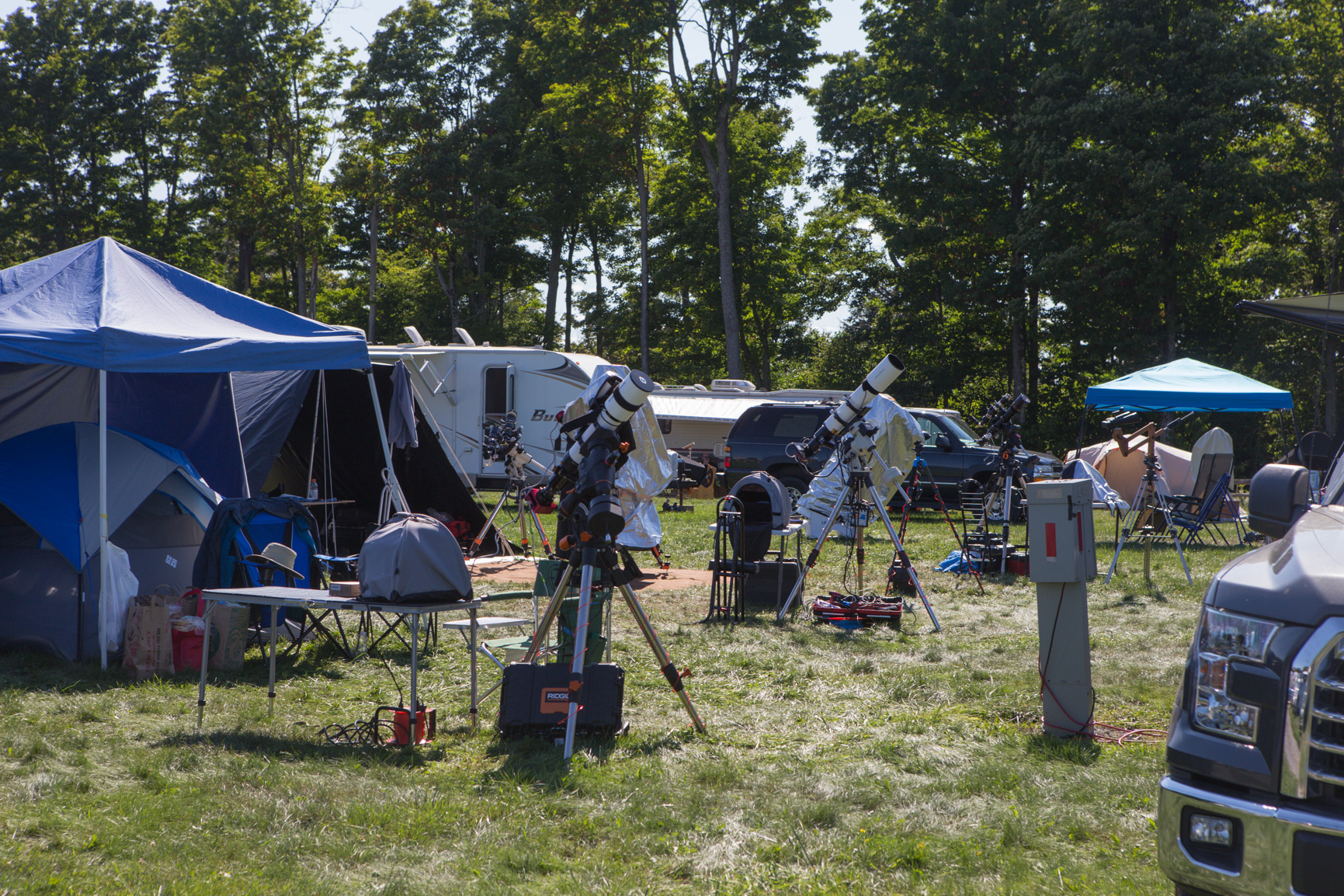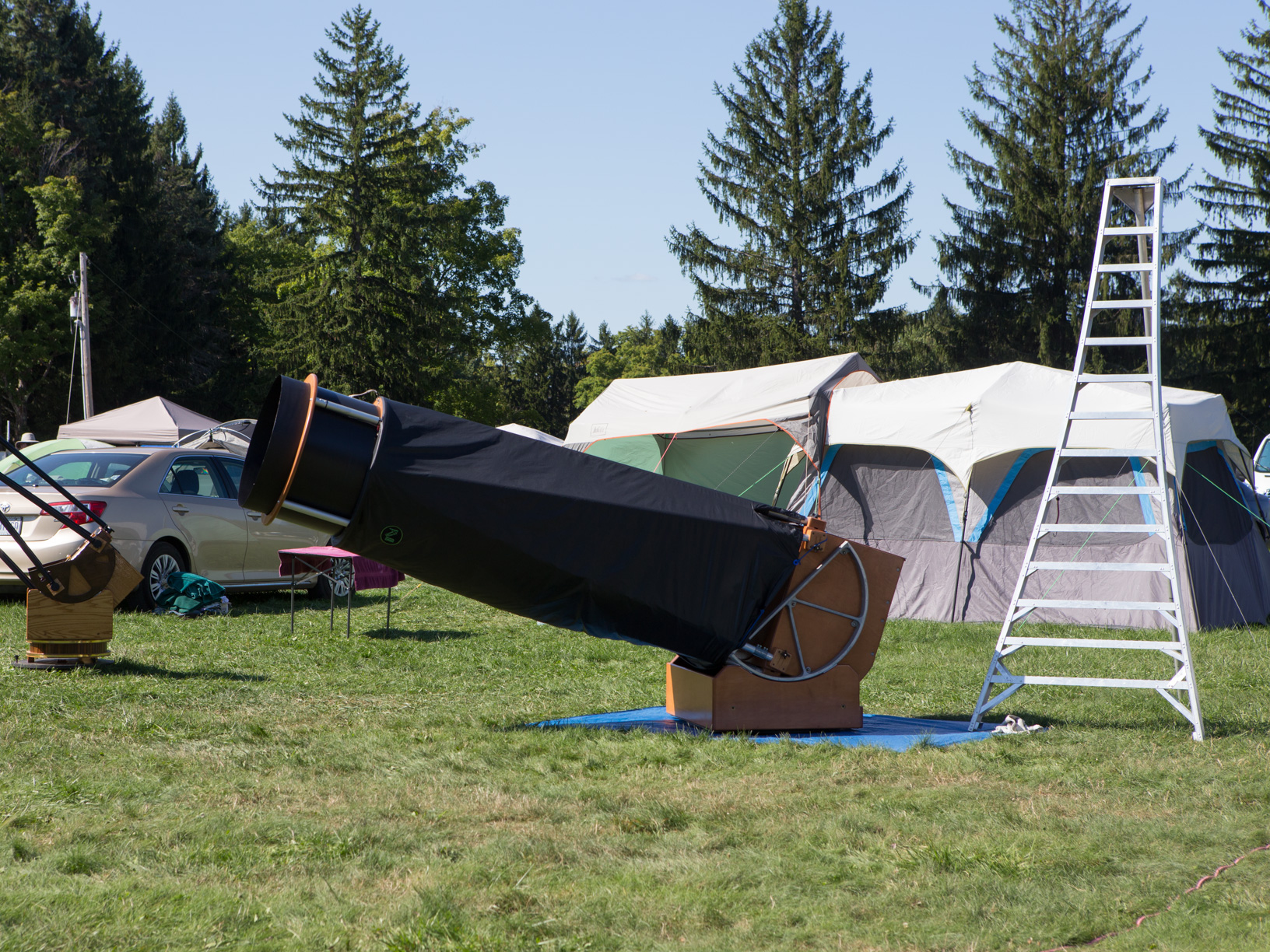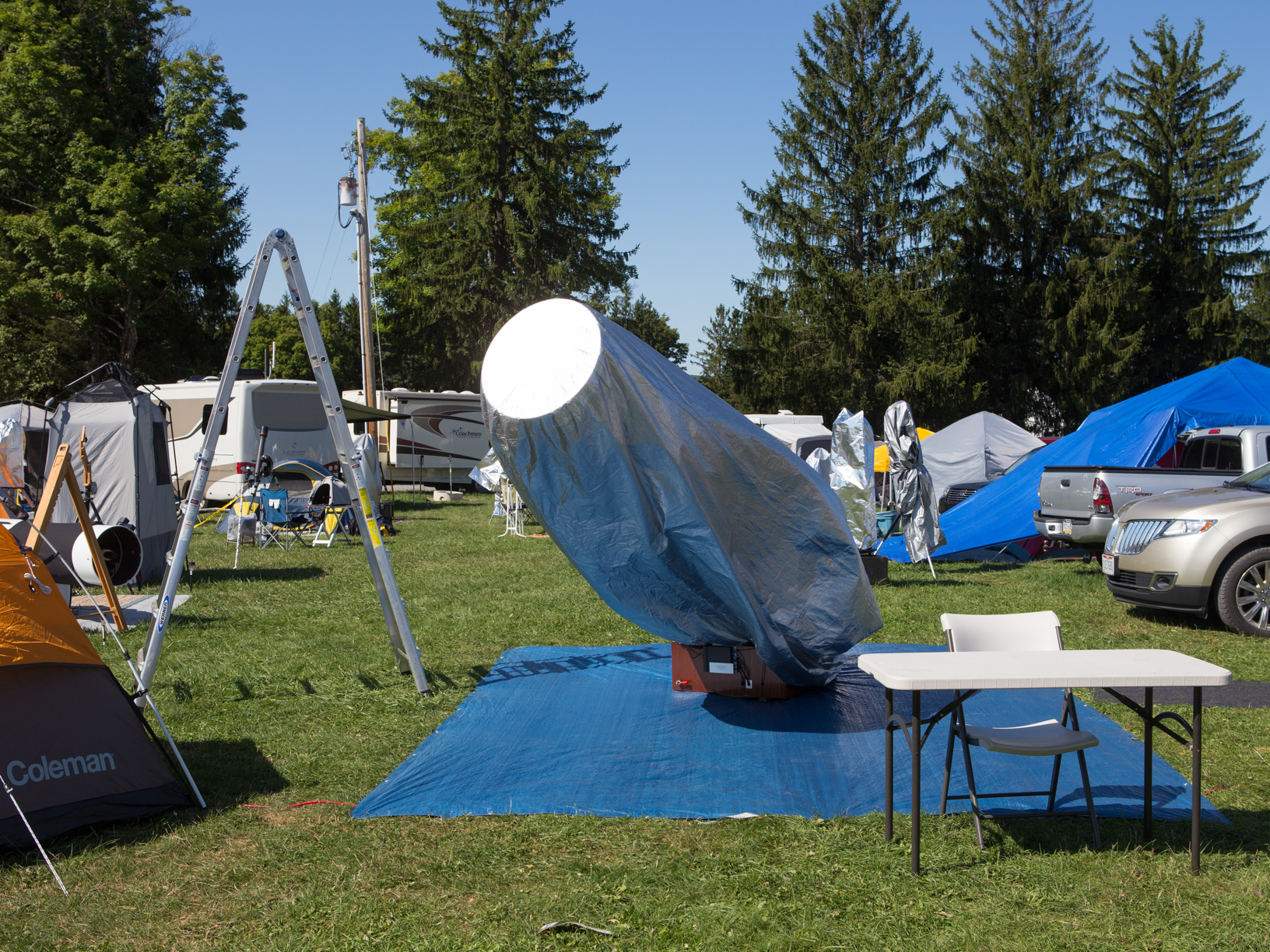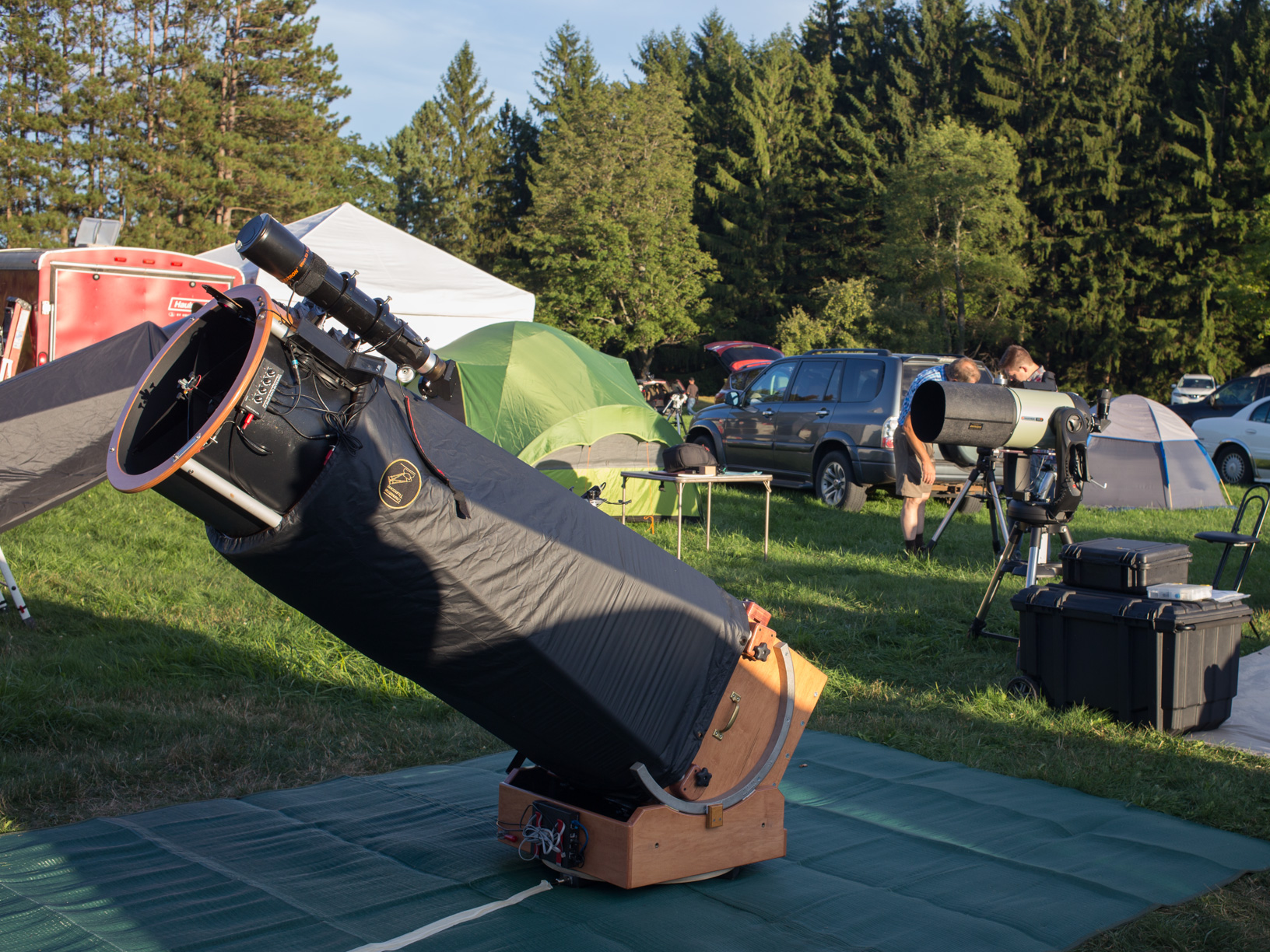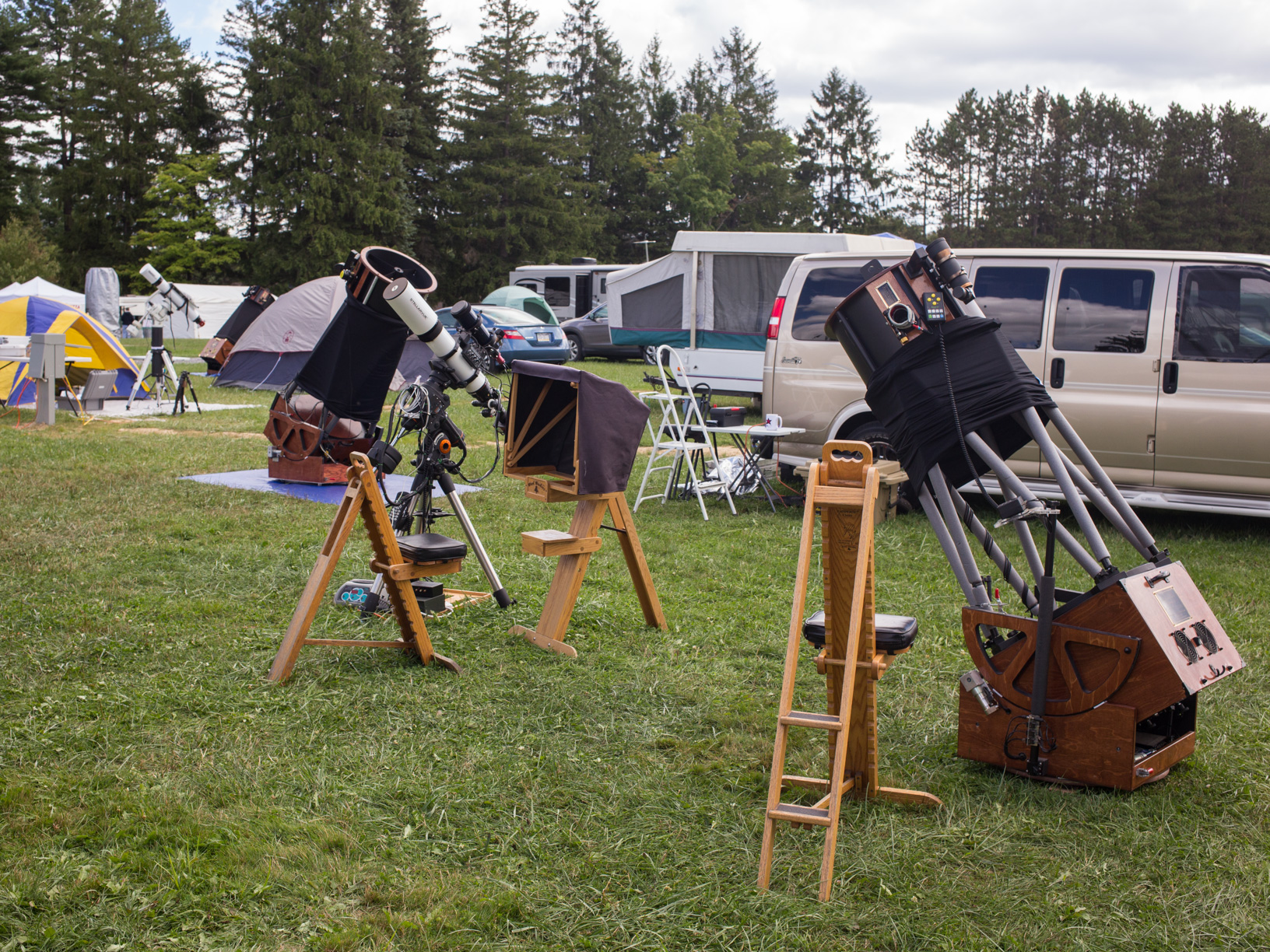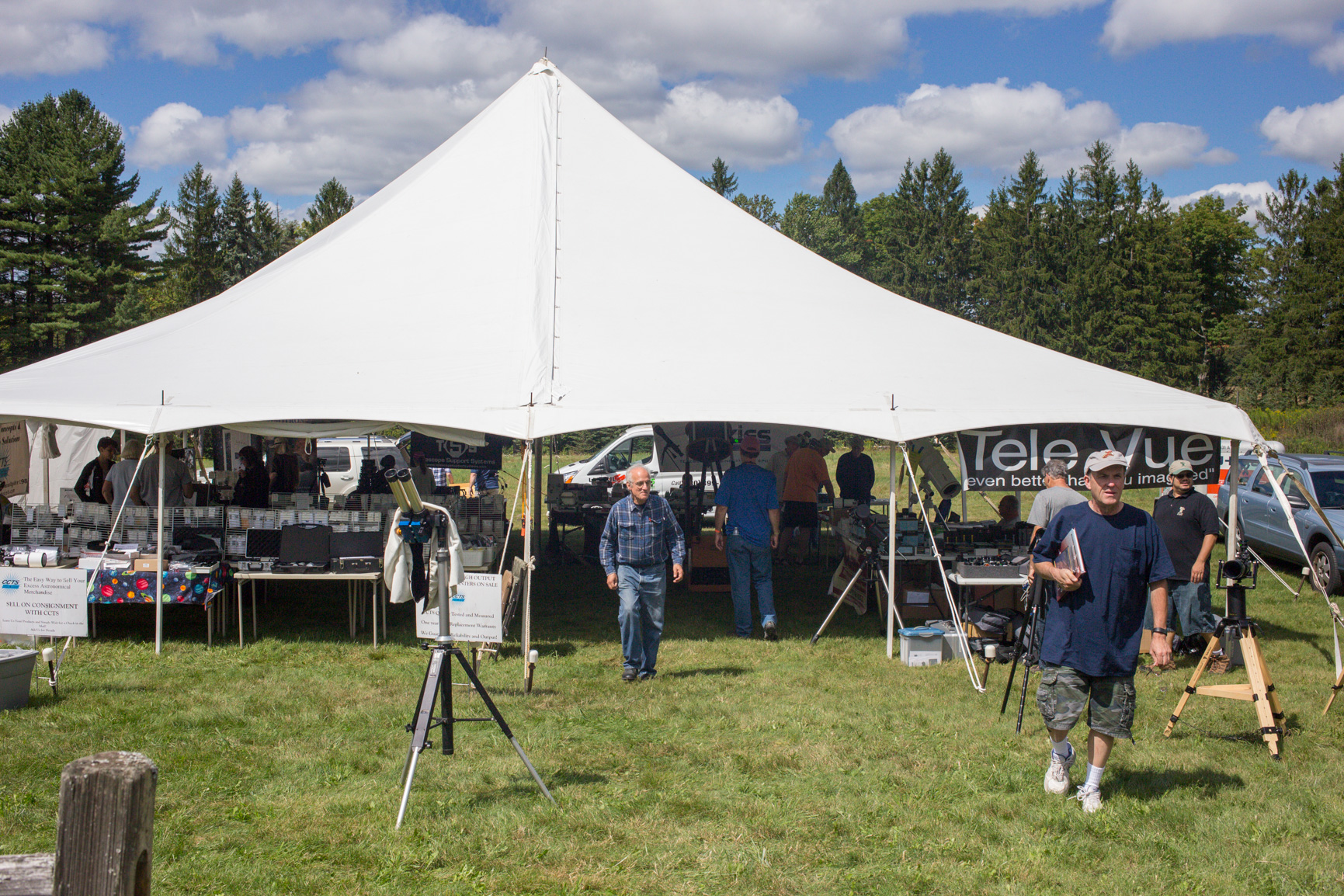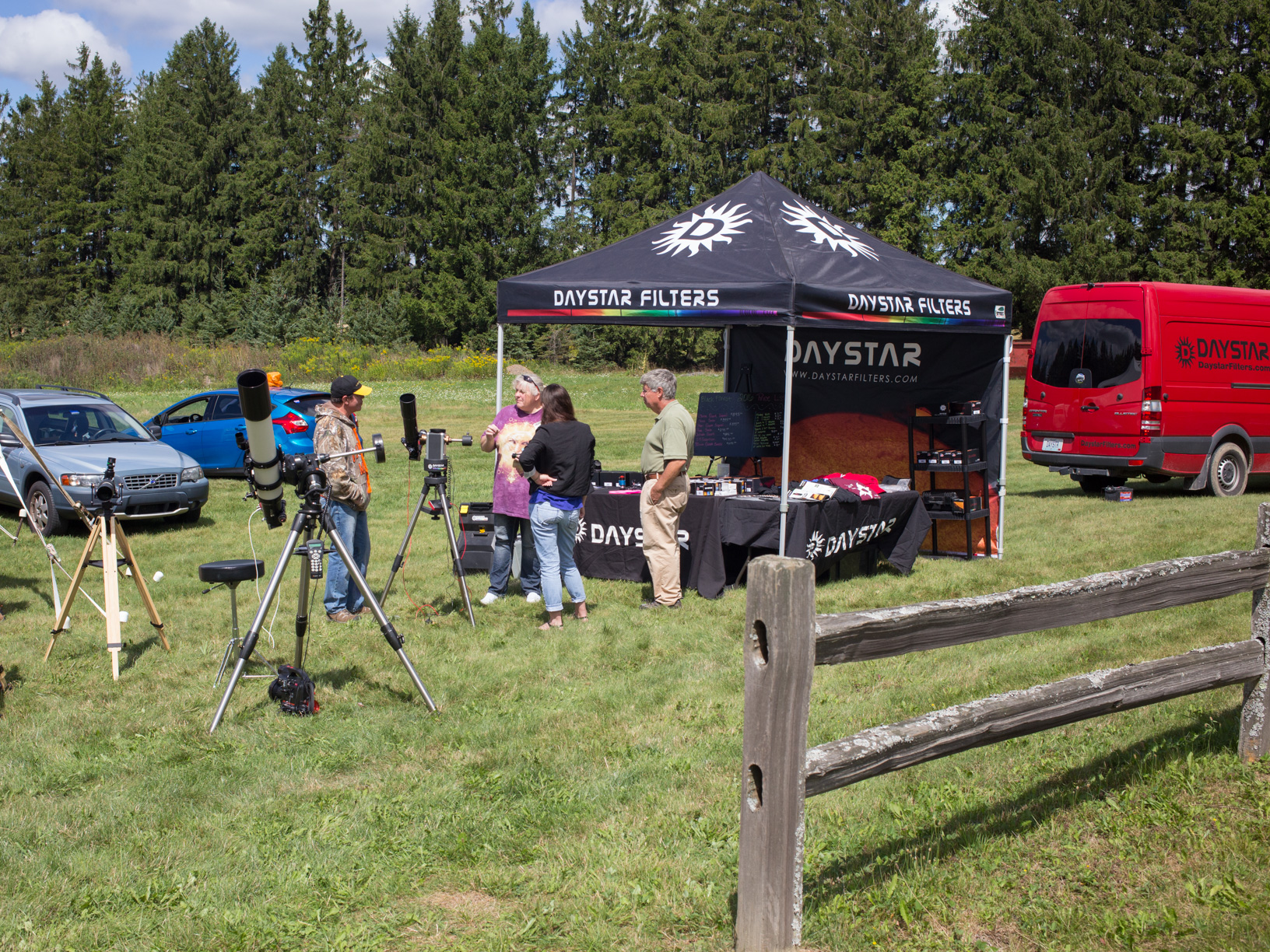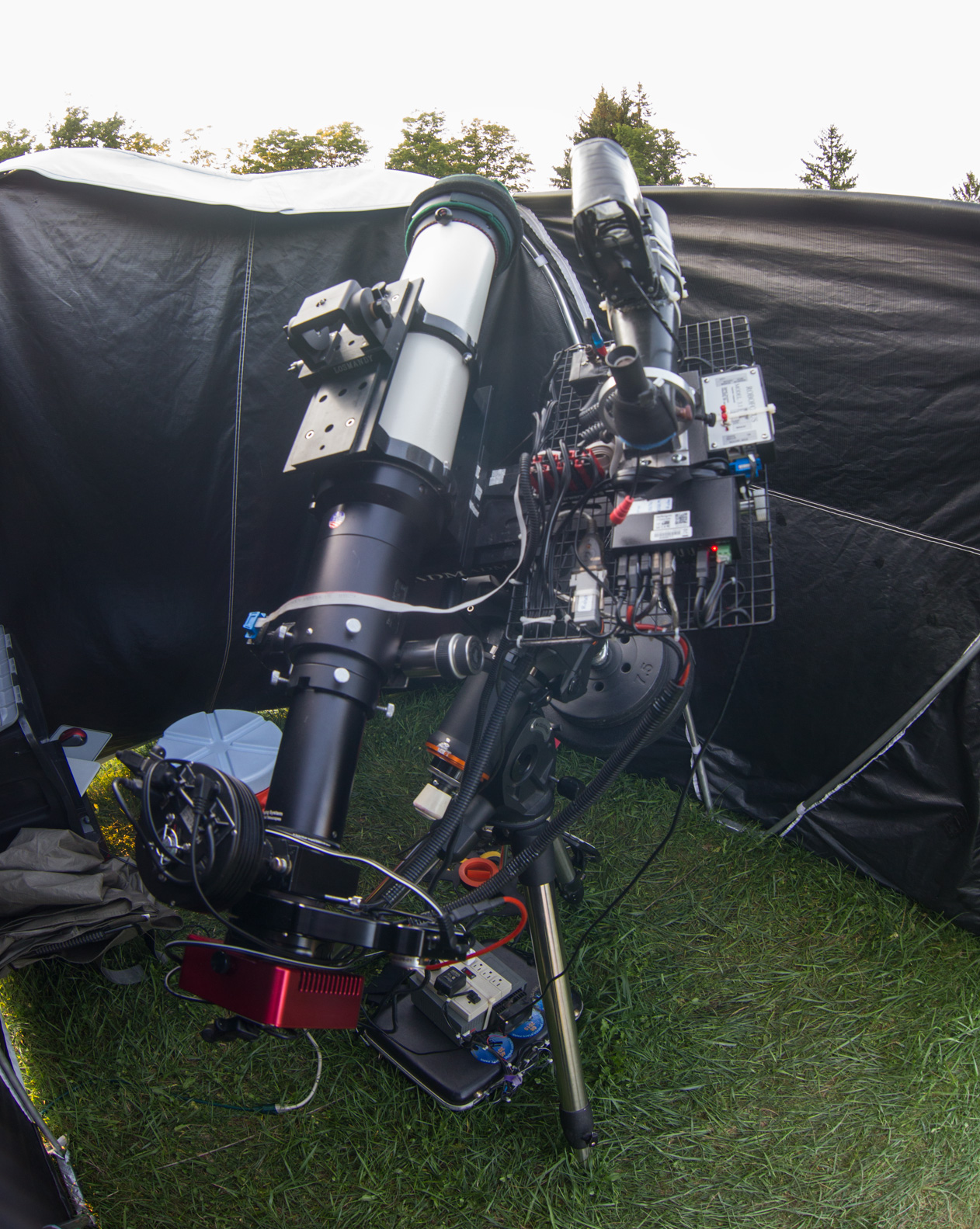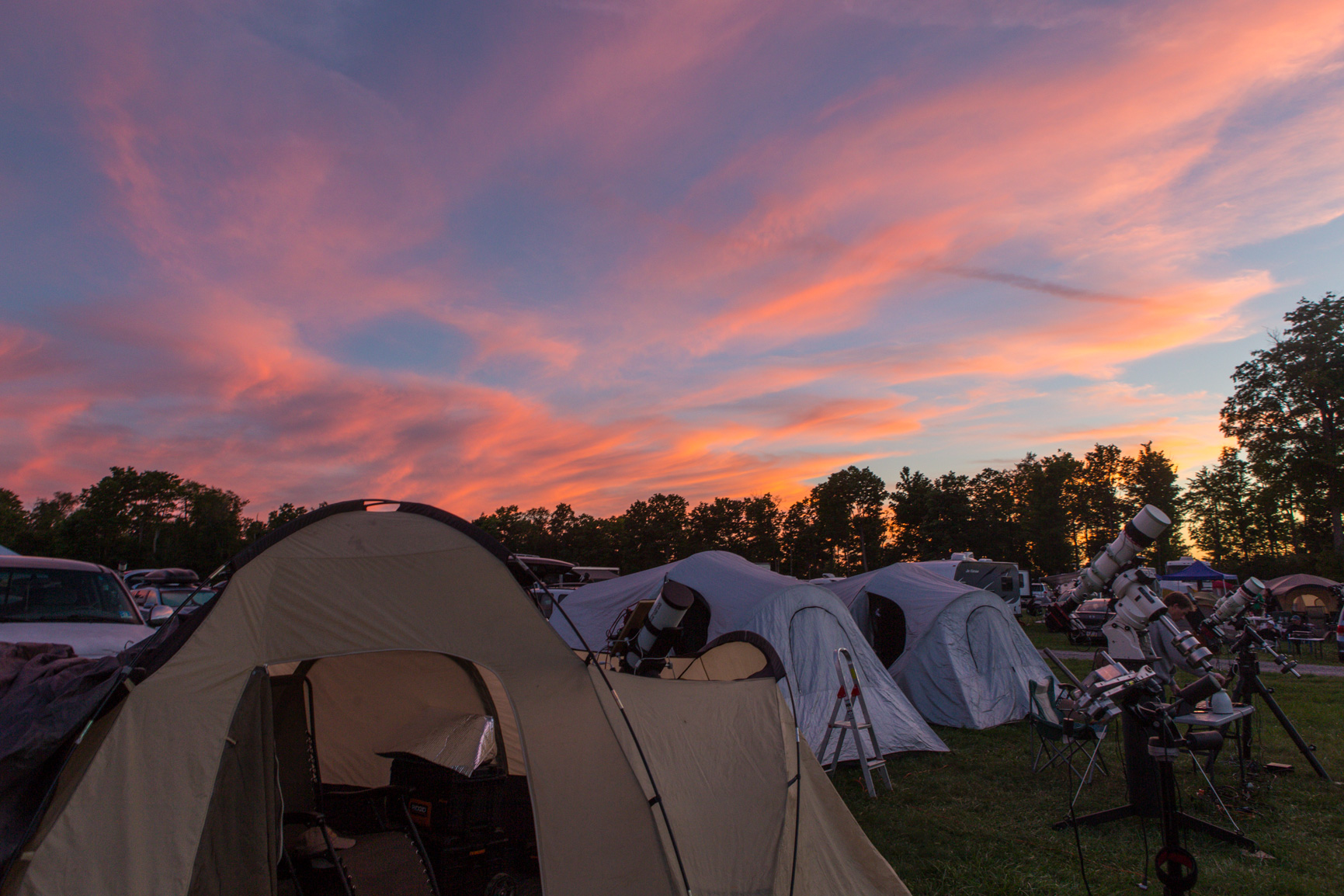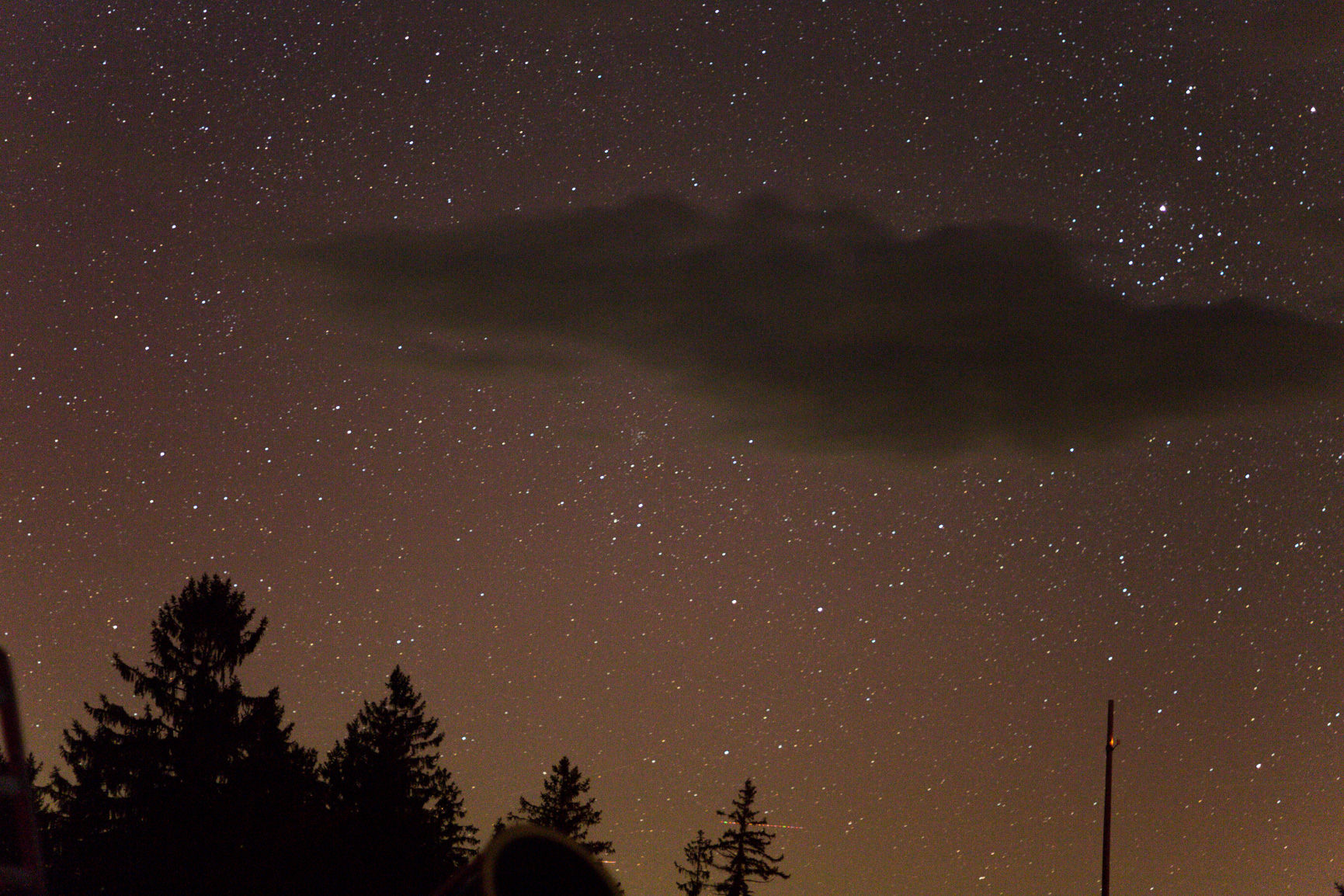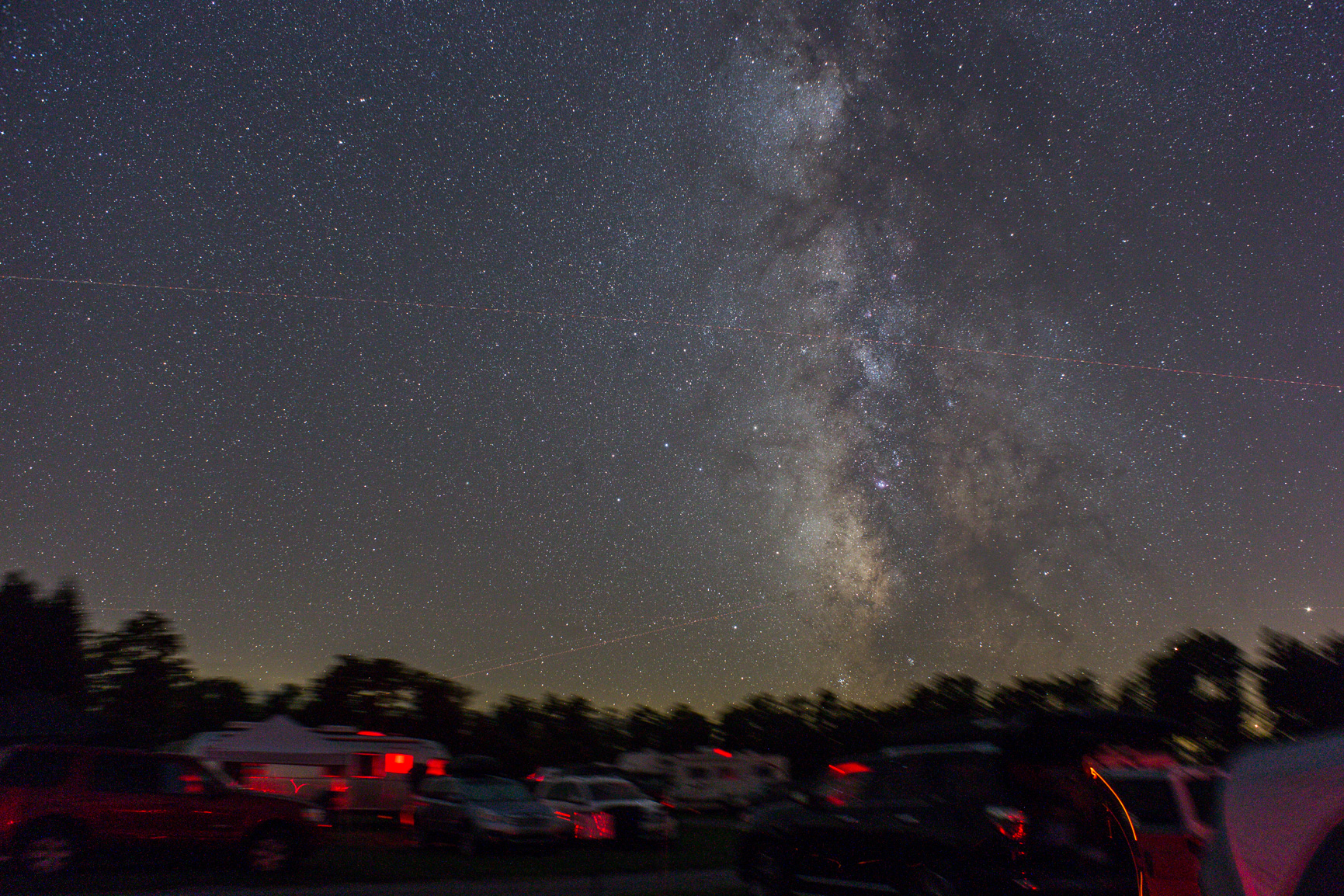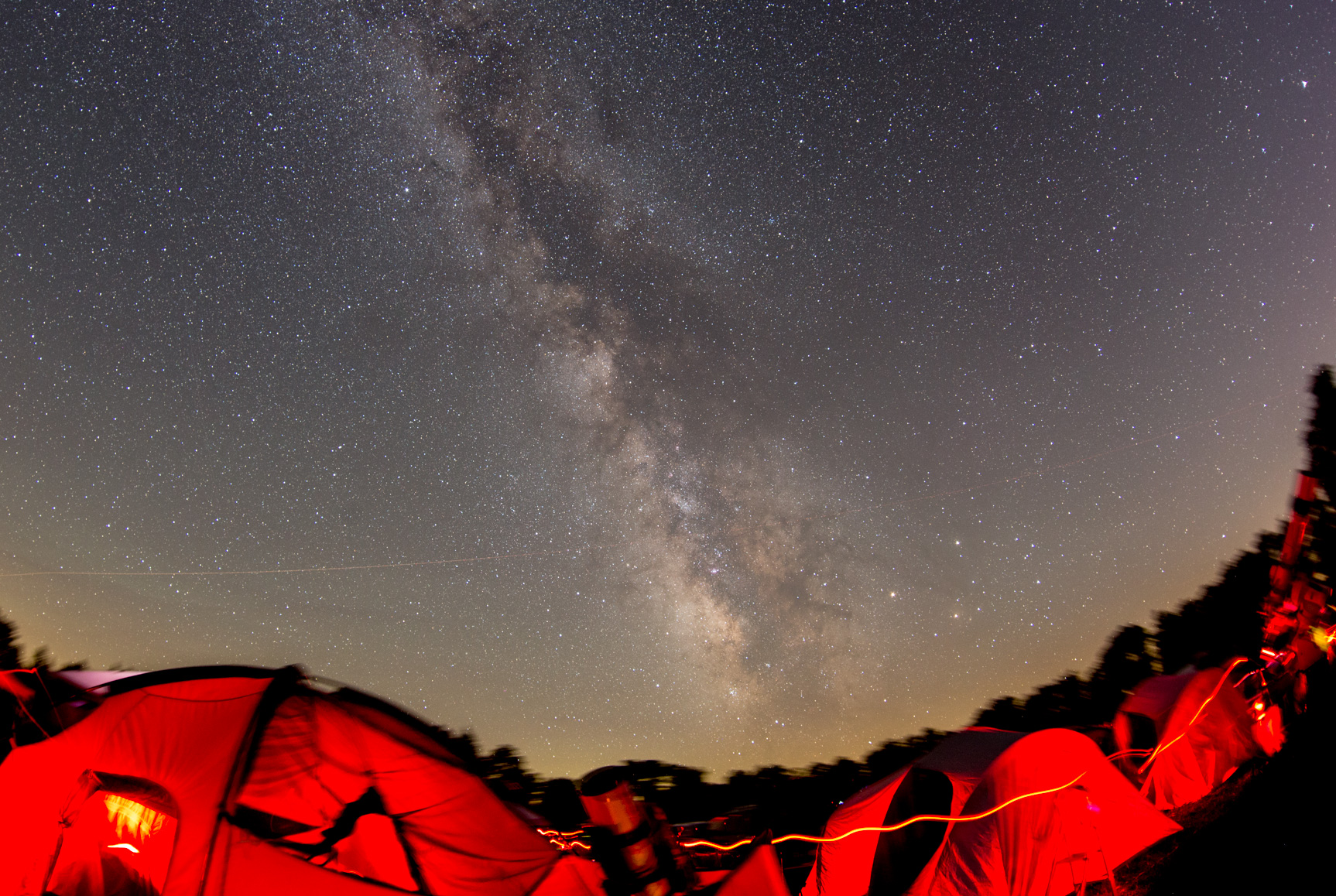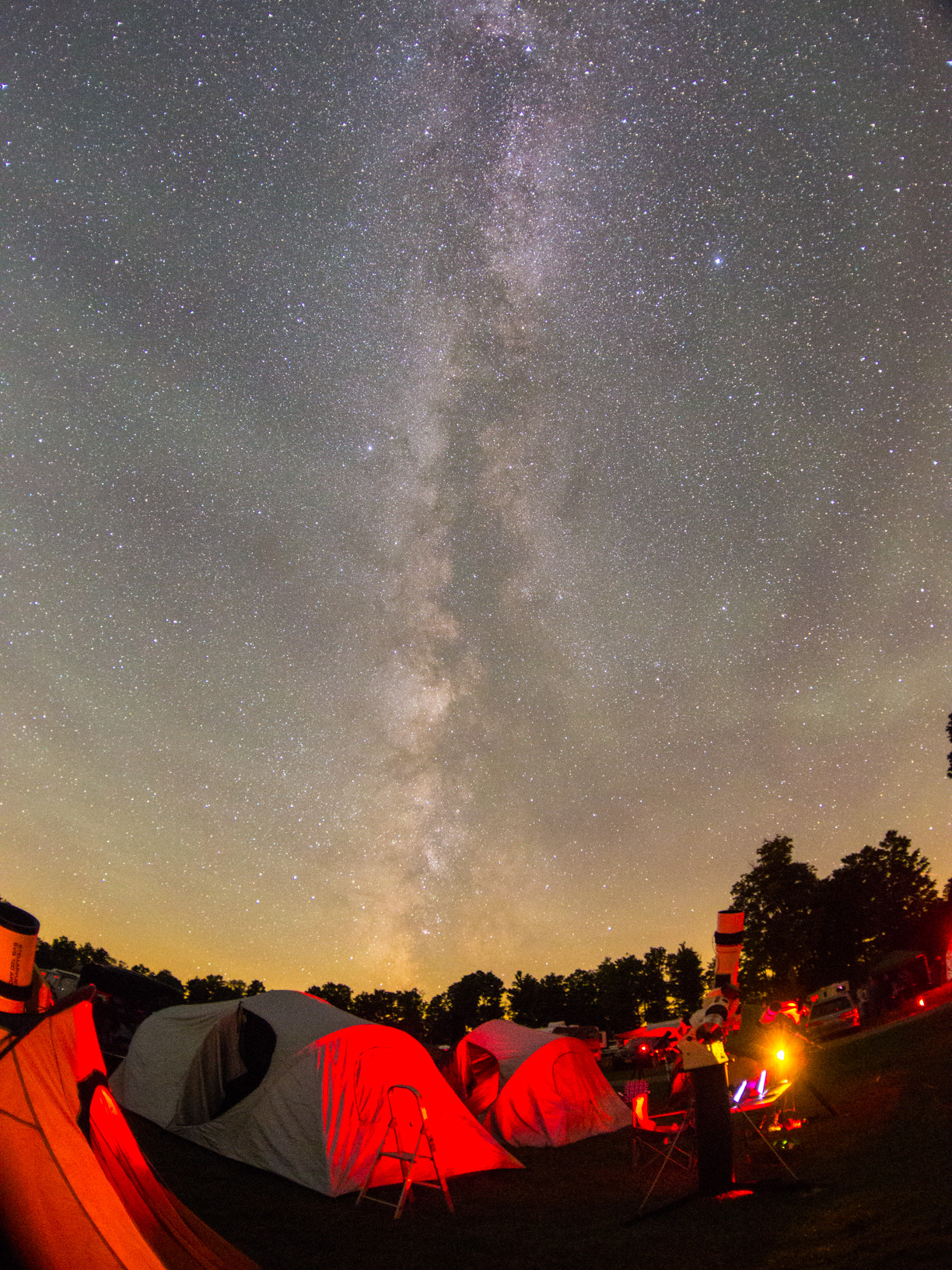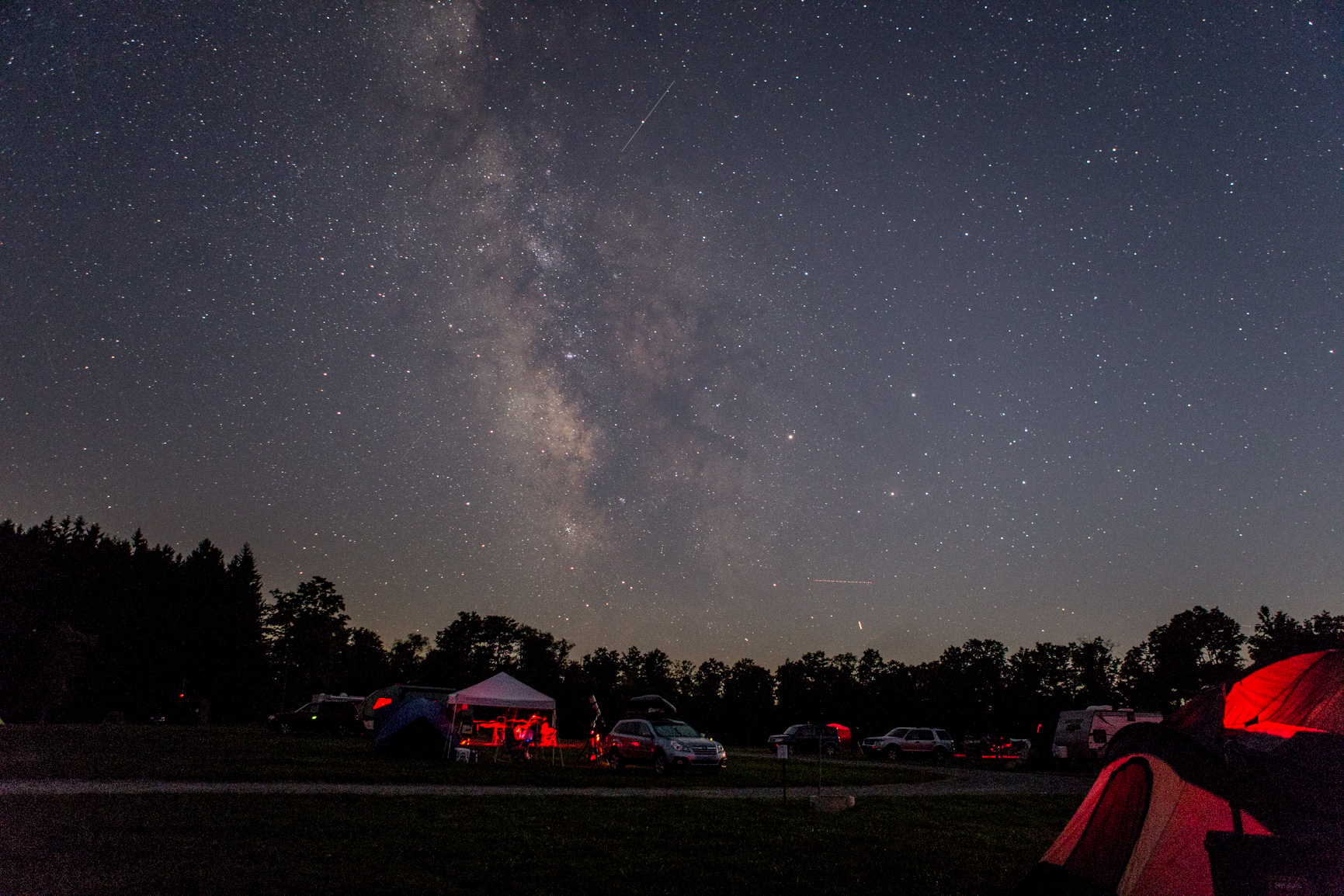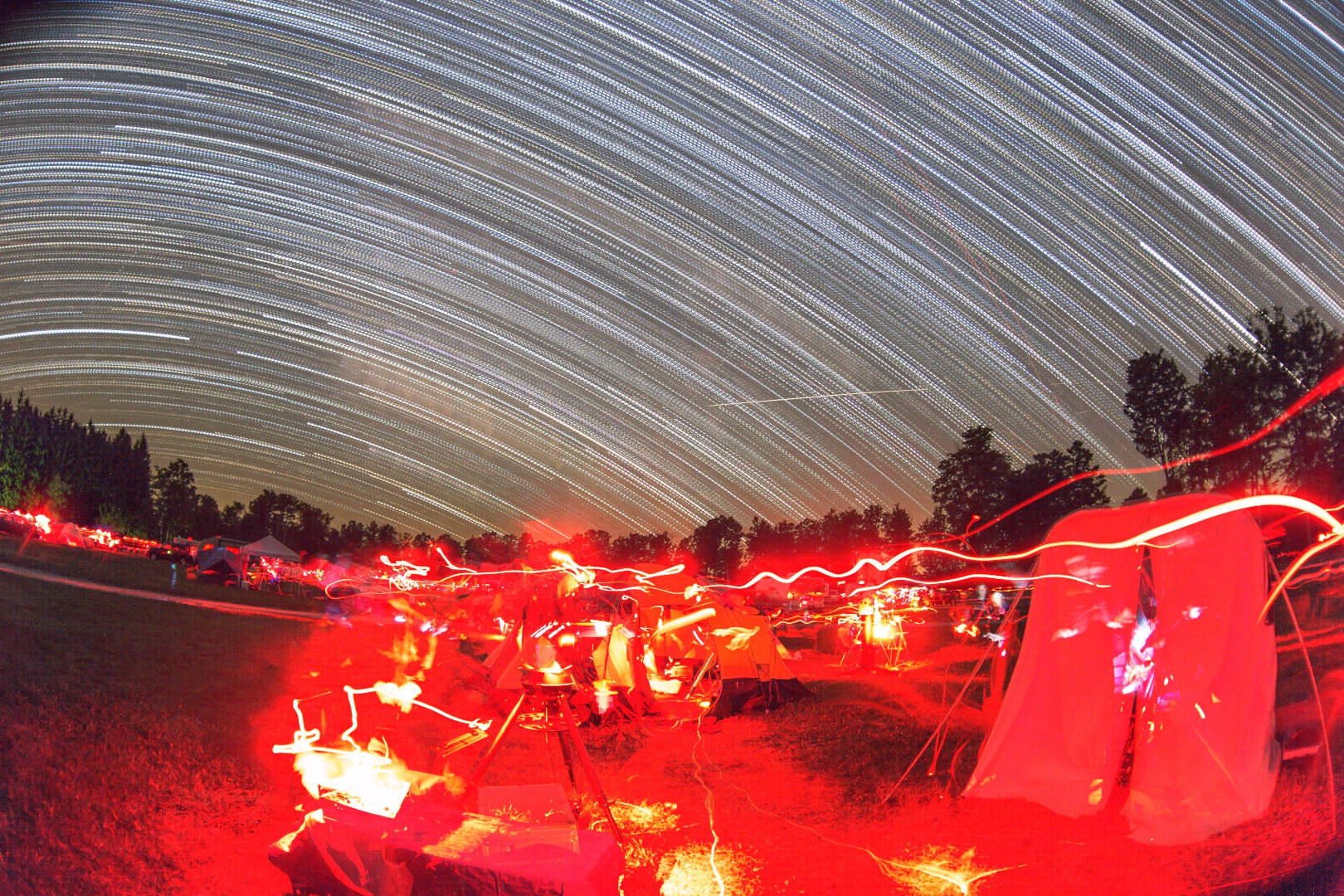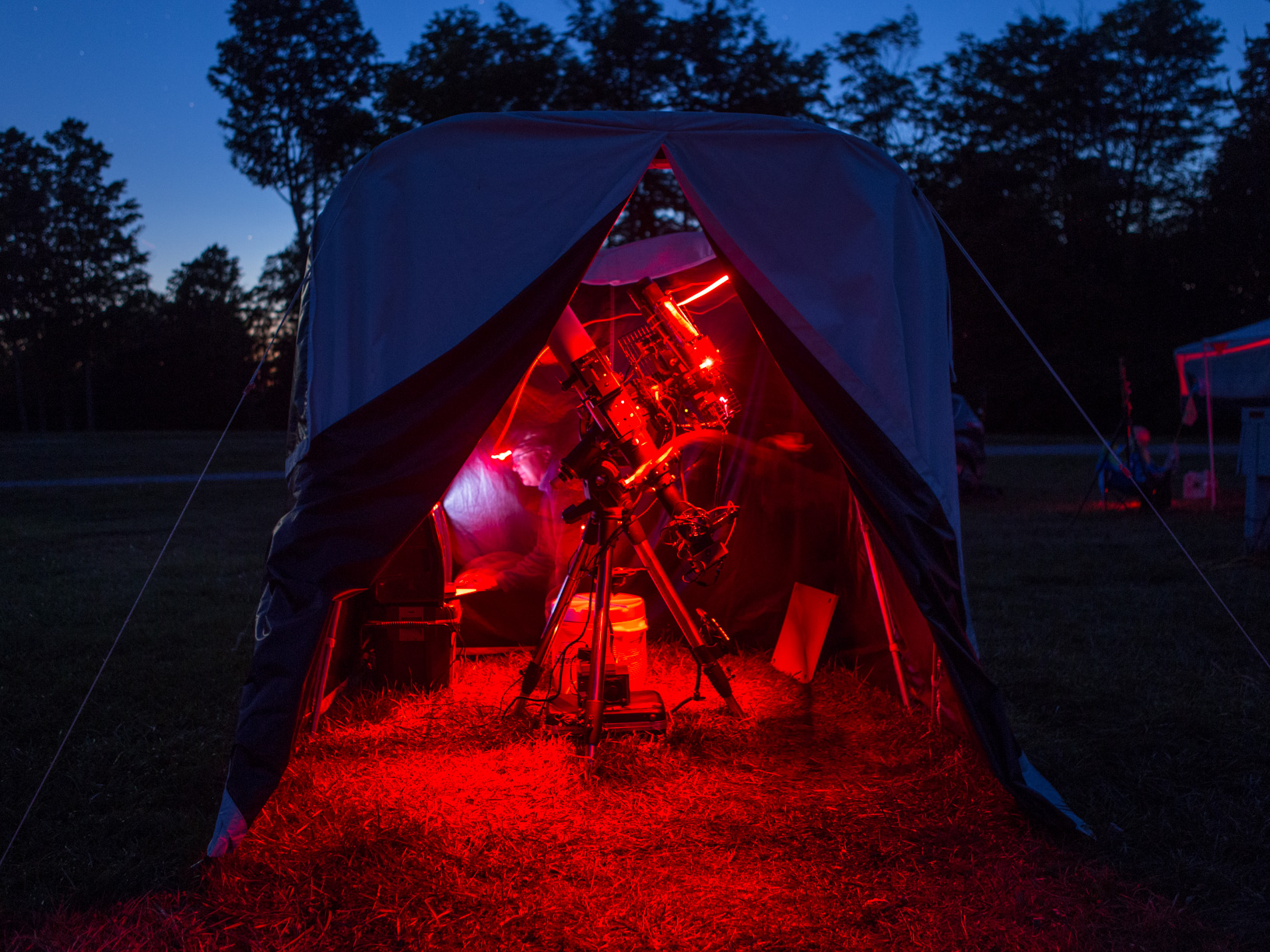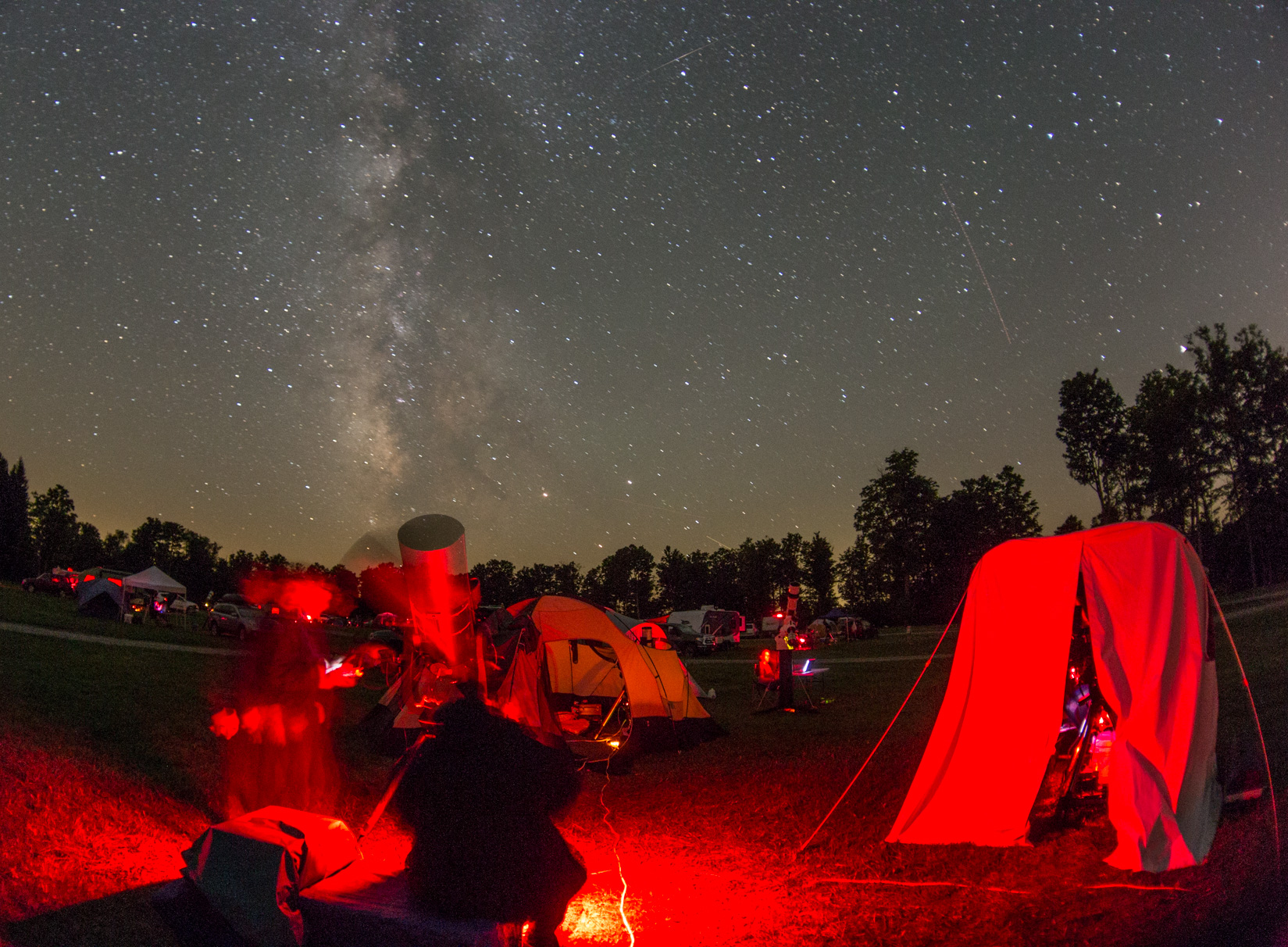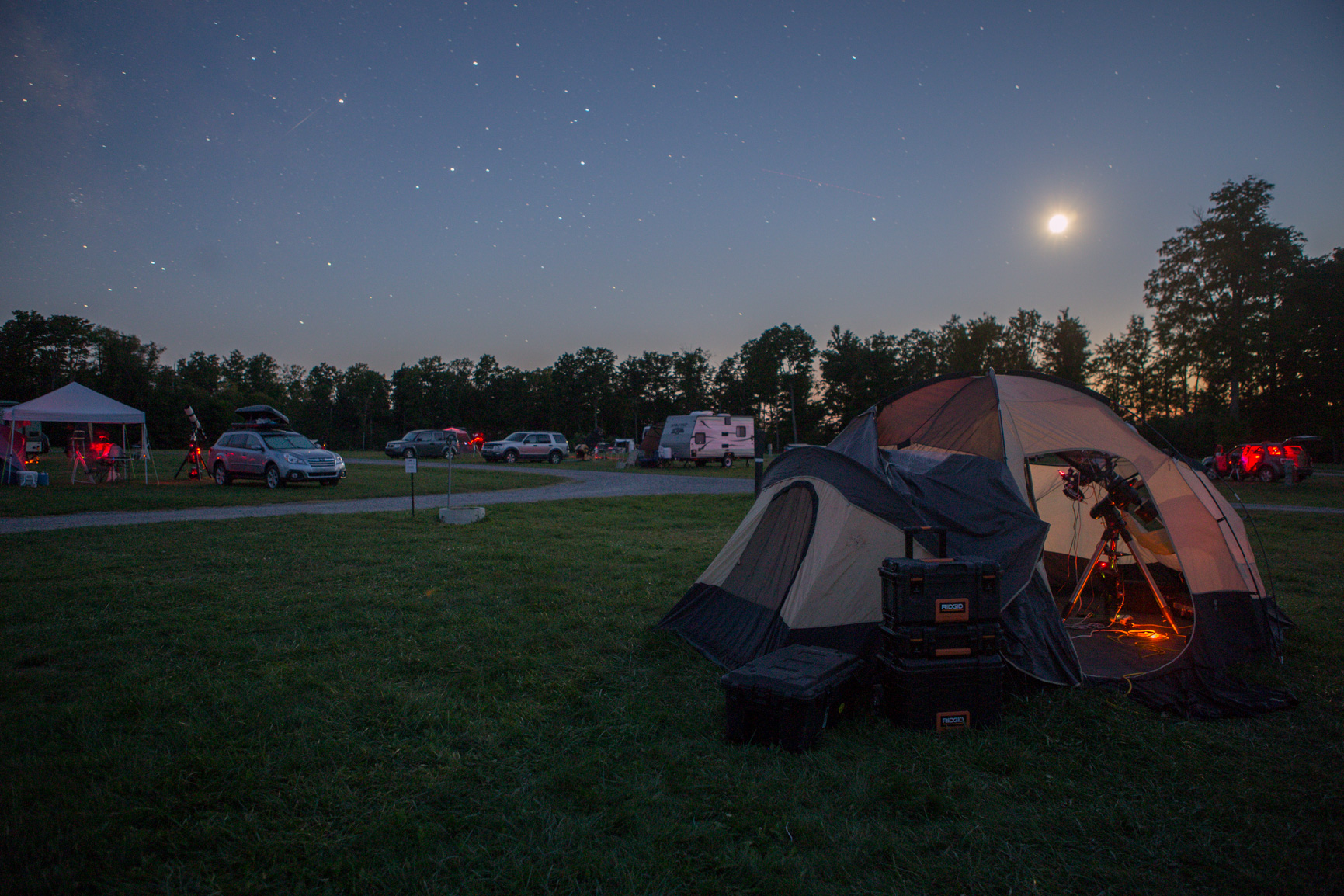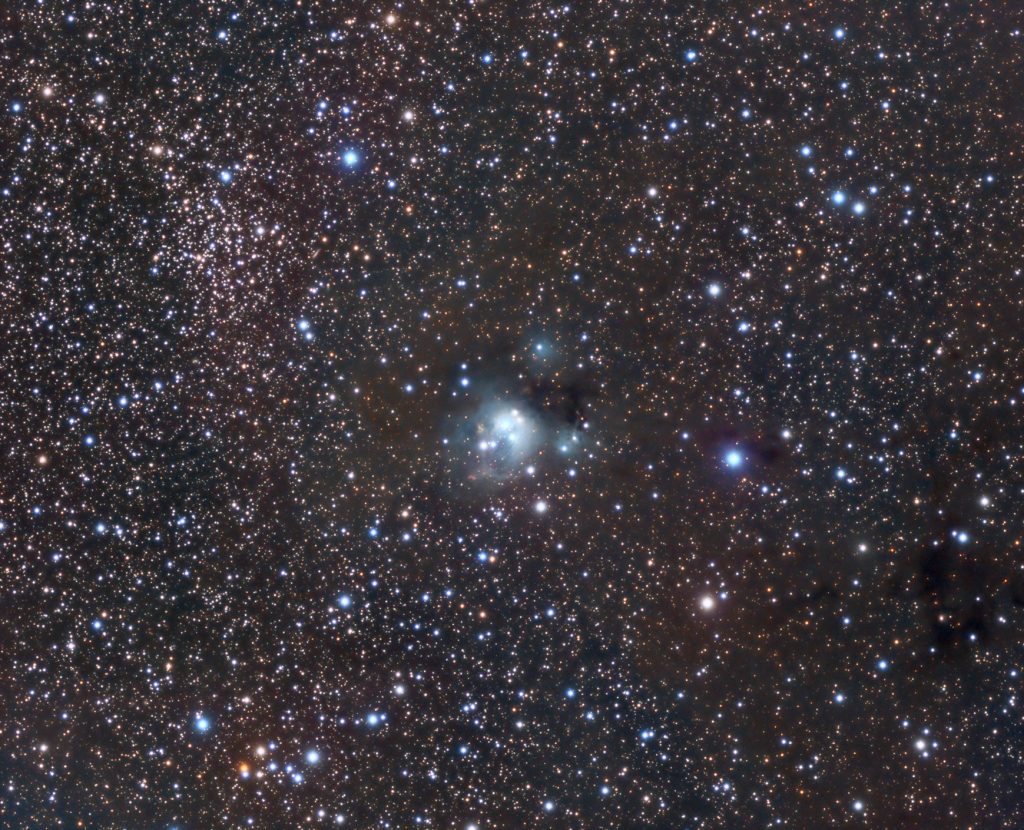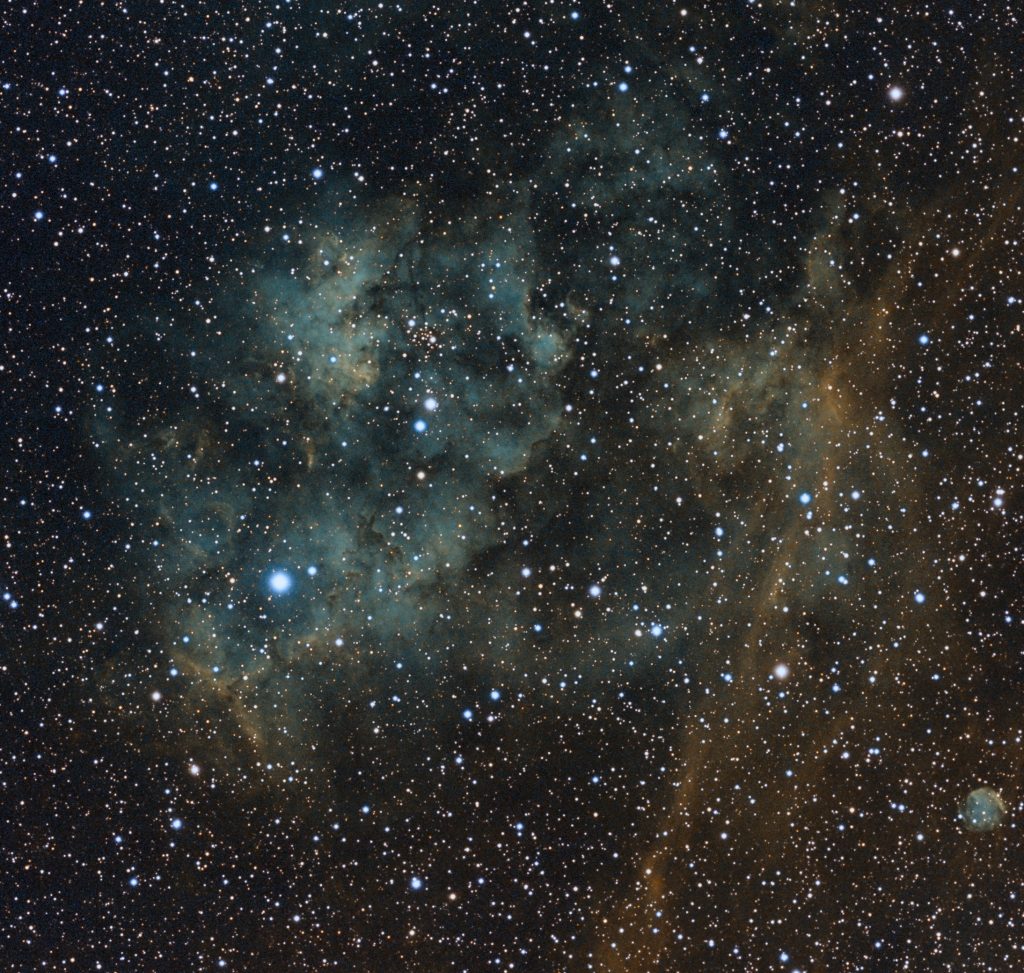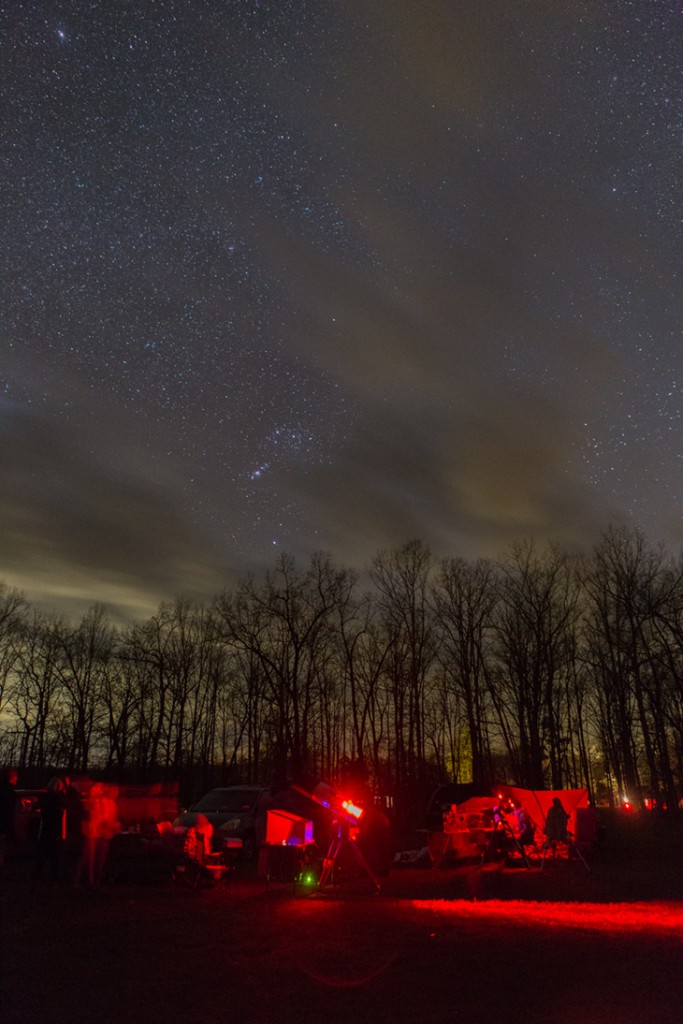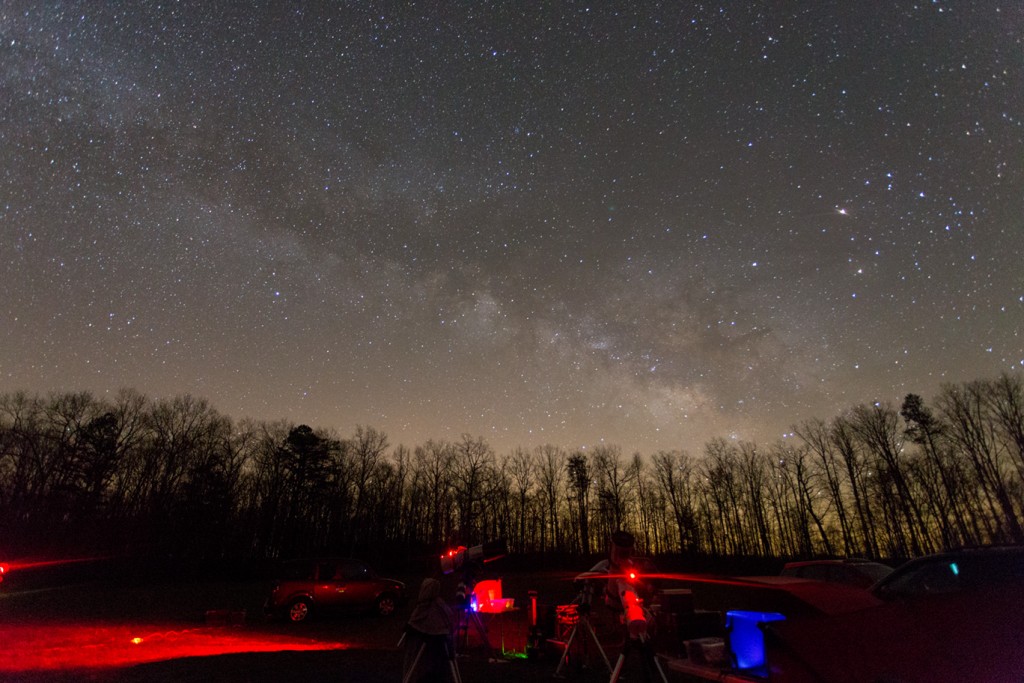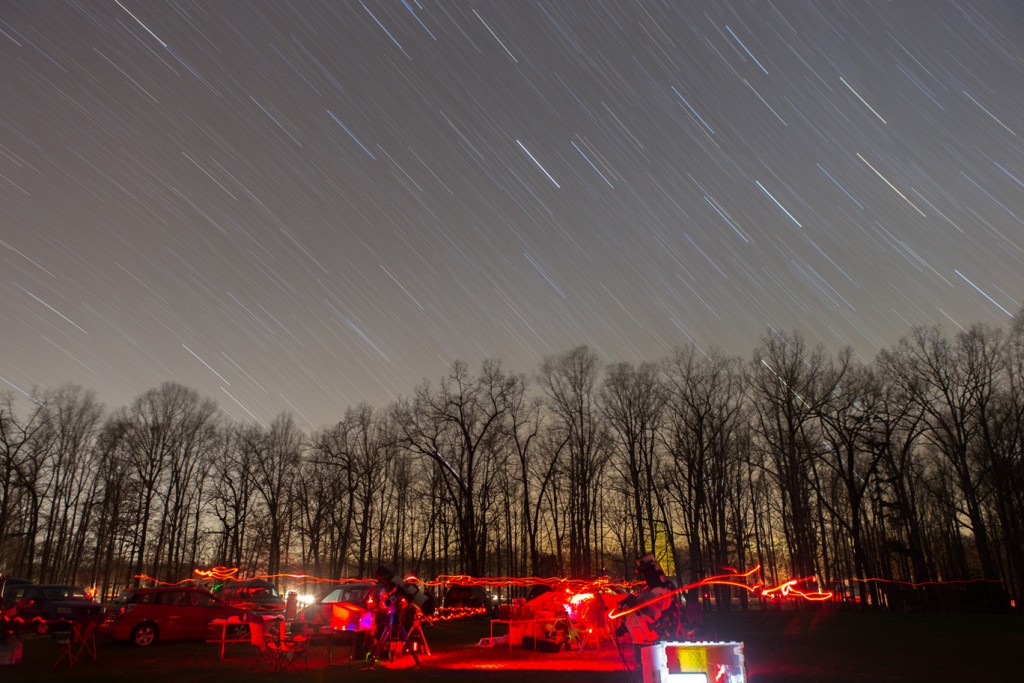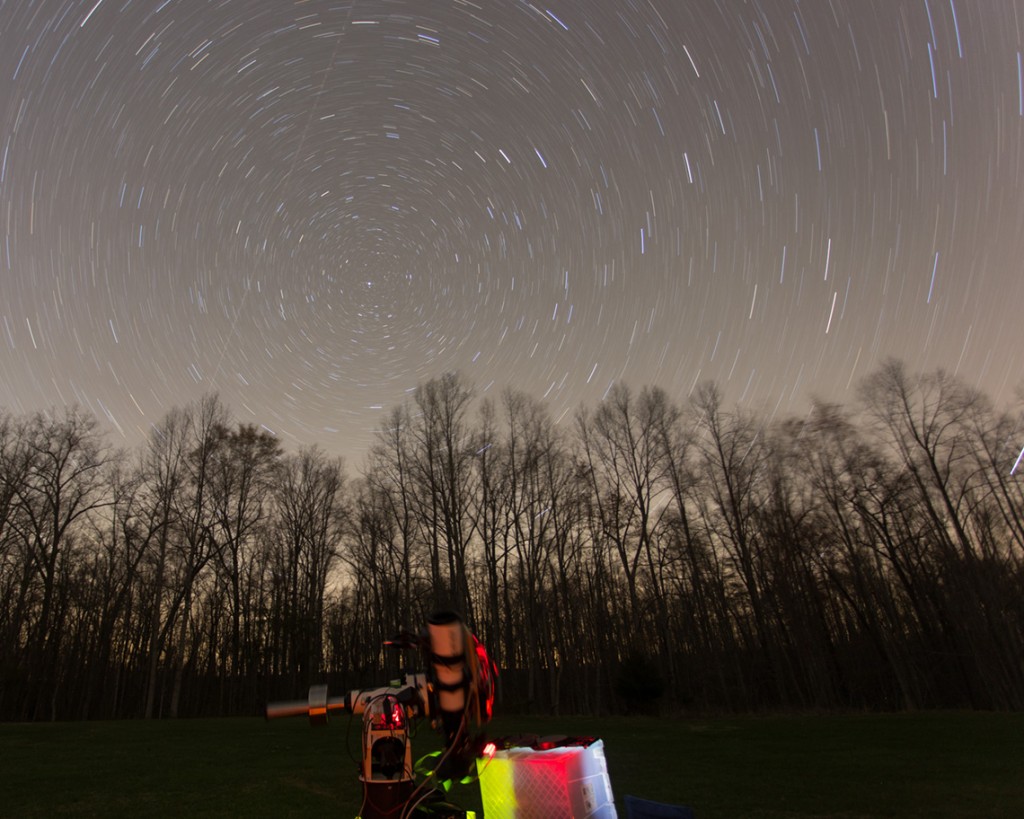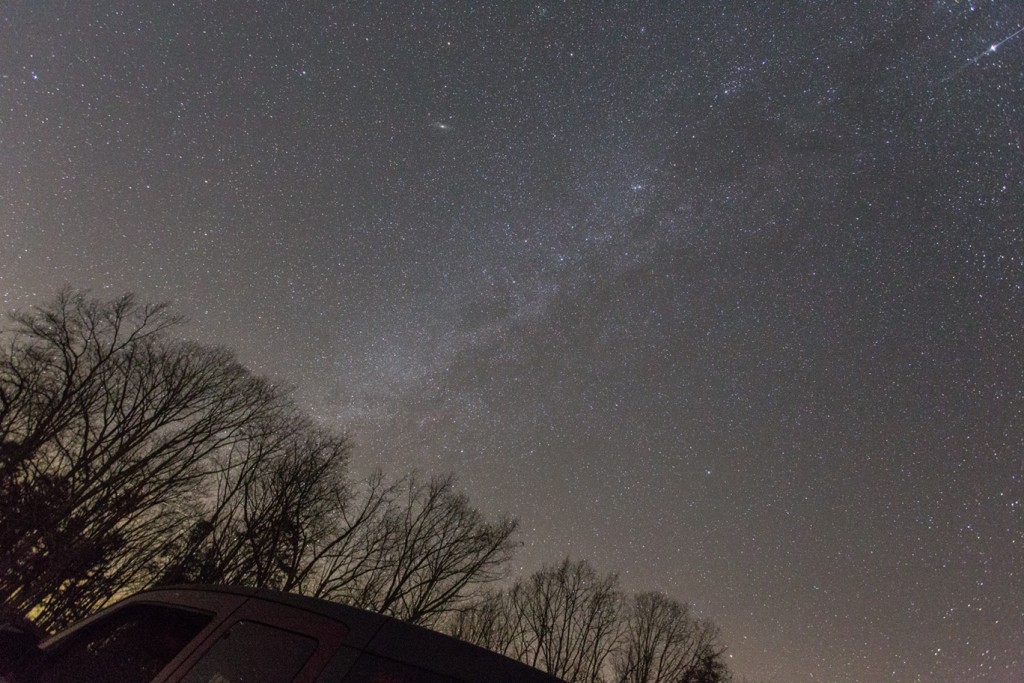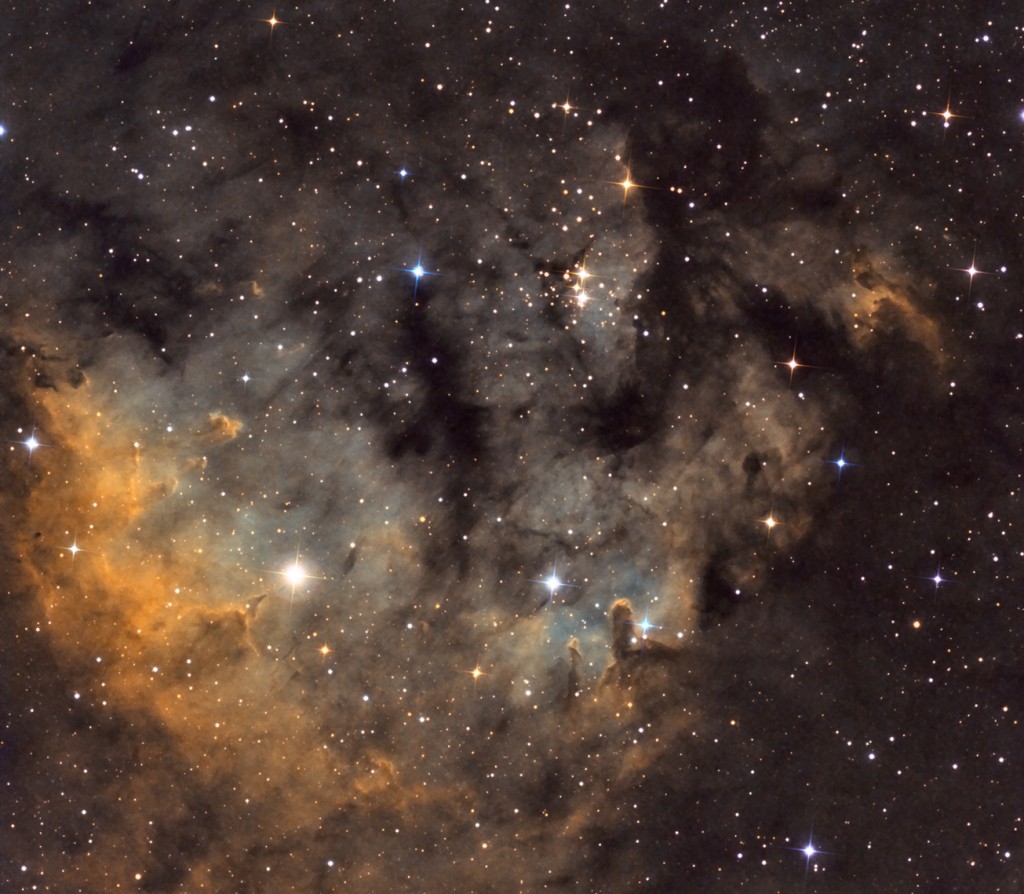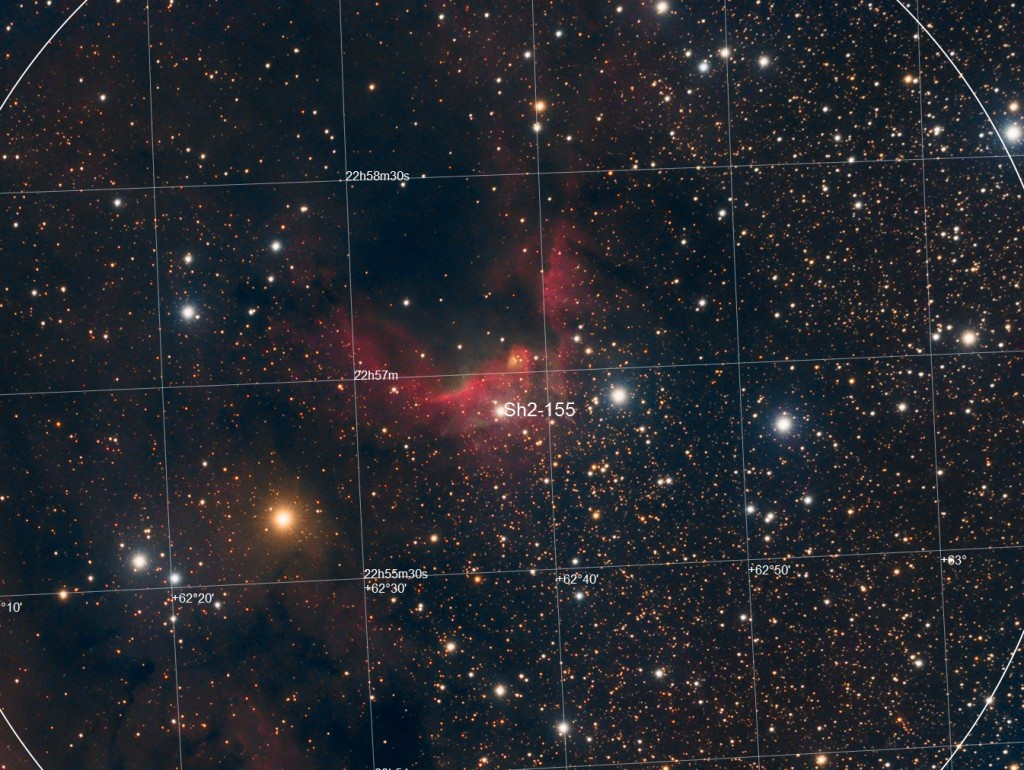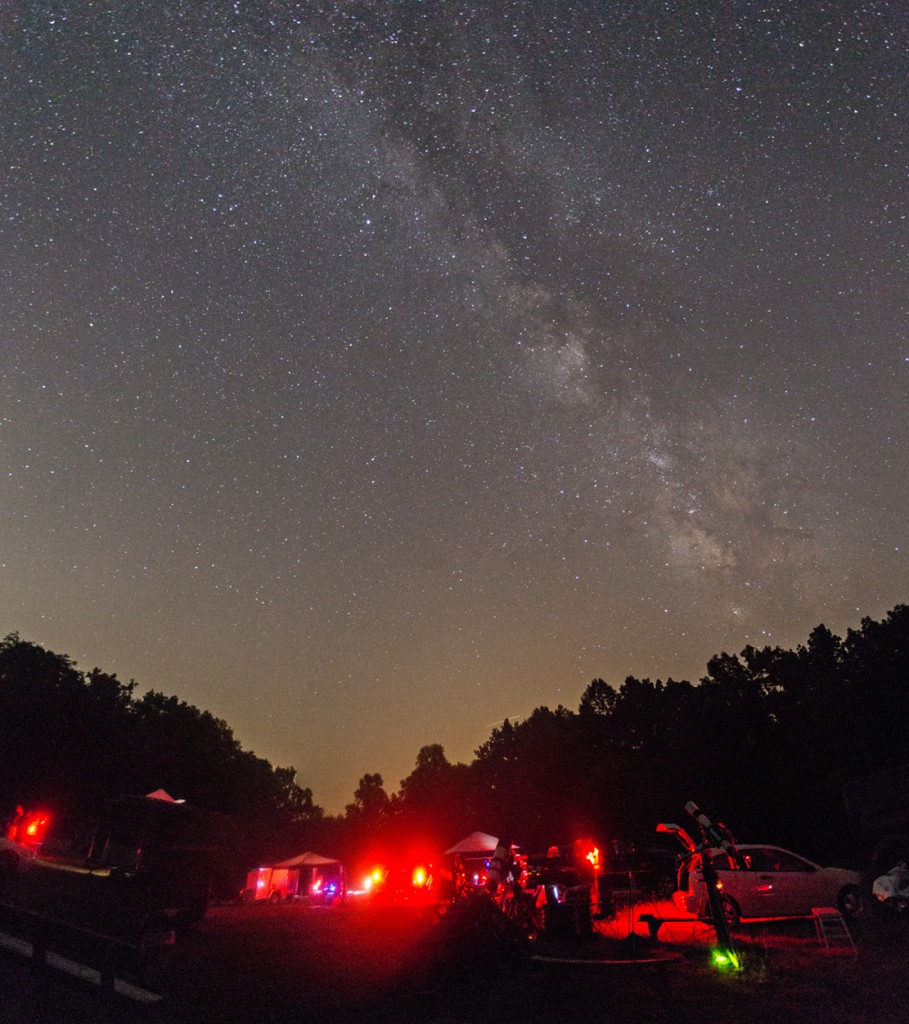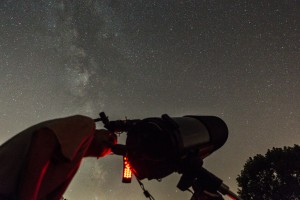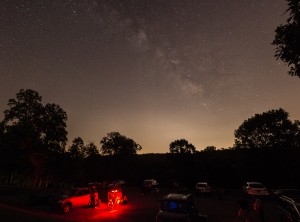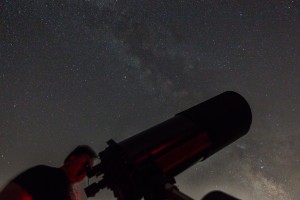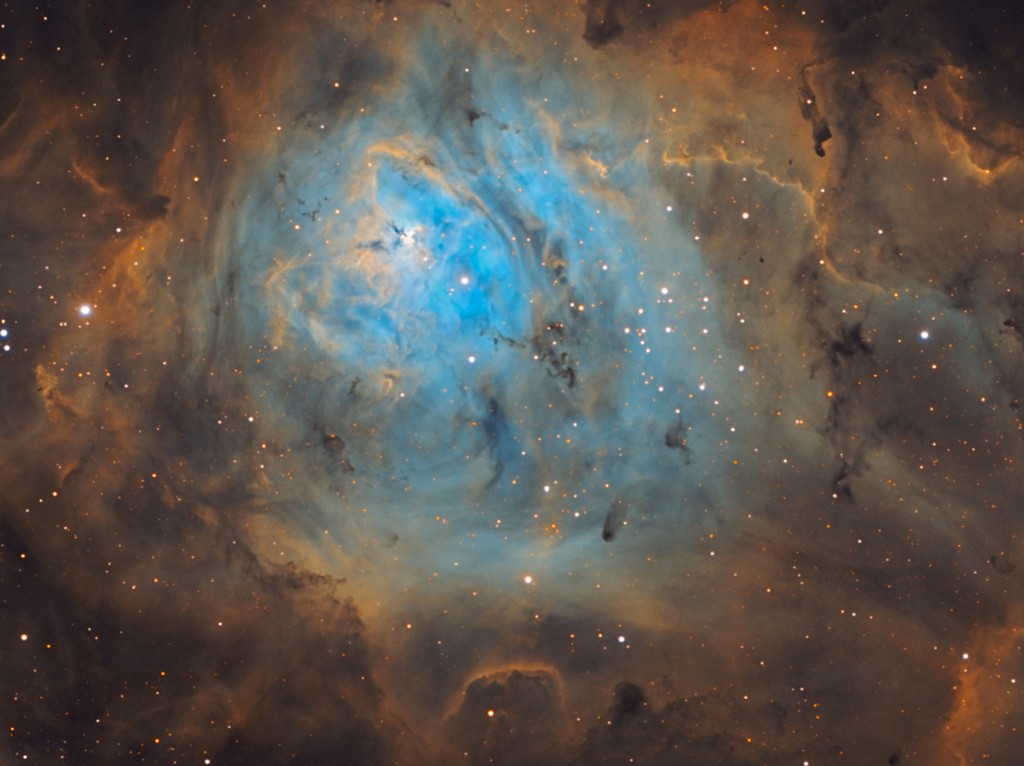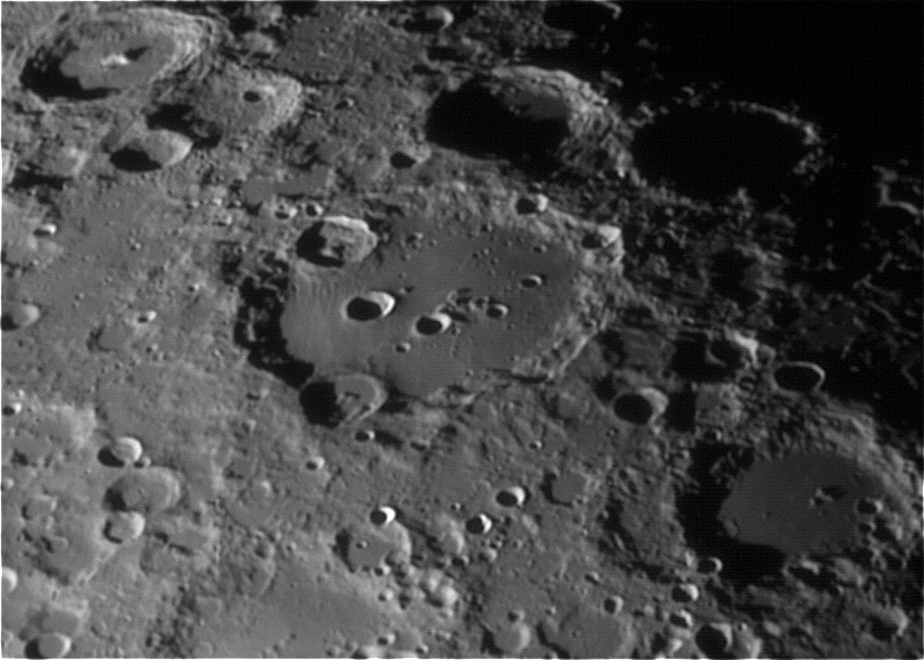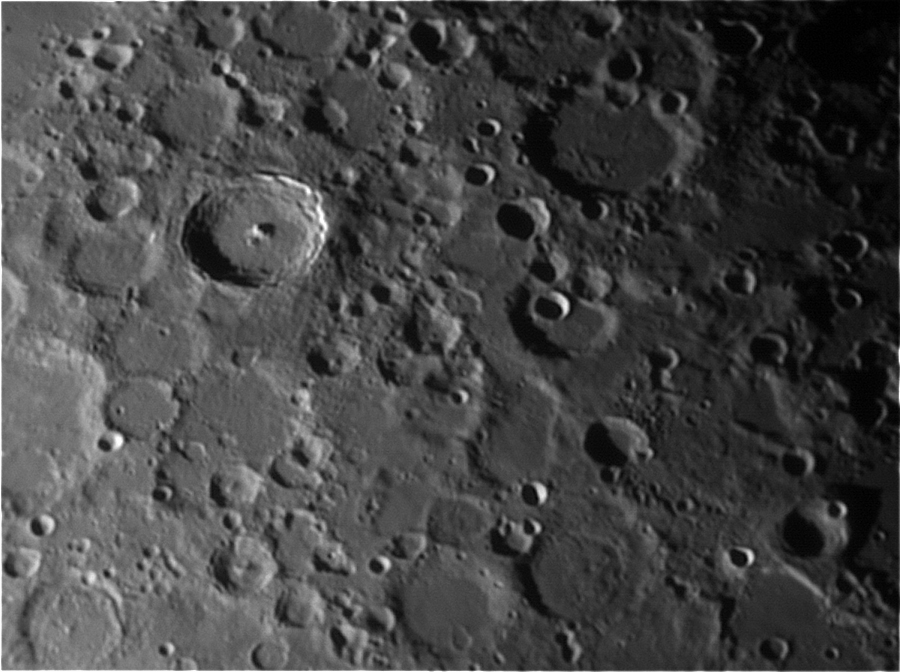Cloudy winter nights have inspired a second look back at some fun summer targets. Here’s NGC 6871 in Cygnus.
Just getting around to publishing some pictures from the 2016 Black Forest Star Party at Cherry Springs State Park in Pennsylvania. What a great stretch of weather for PA! The nights weren’t the darkest or most transparent (SQM 21.4-21.5) nights I’ve had at CSSP but clear and a little murky was way better than the alternative after driving up from Knoxville TN. Had a great time with some old friends and good to see some old club members too.
Had a few imaging problems related to dithering and settle time / settle criteria that made me lose a fair number of shots but I got two images which, I have to be honest, I’m not real pleased with. They are however, more challenging objects, but would have come out better had the sky conditions been closer to the SQM 21.8 that I’ve seen before at CSSP. But, we take whatever quality of clear sky we can get during a pre-planned star party!
On April 1st through April 3rd Pickett State Park, a newly designated IDA Dark Sky Site, held its first Astronomy Weekend Star Party. We were clouded out Friday night but clouds on Saturday finally yielded to clear skies albeit with some very gusty winds until the wee hours of the morning.
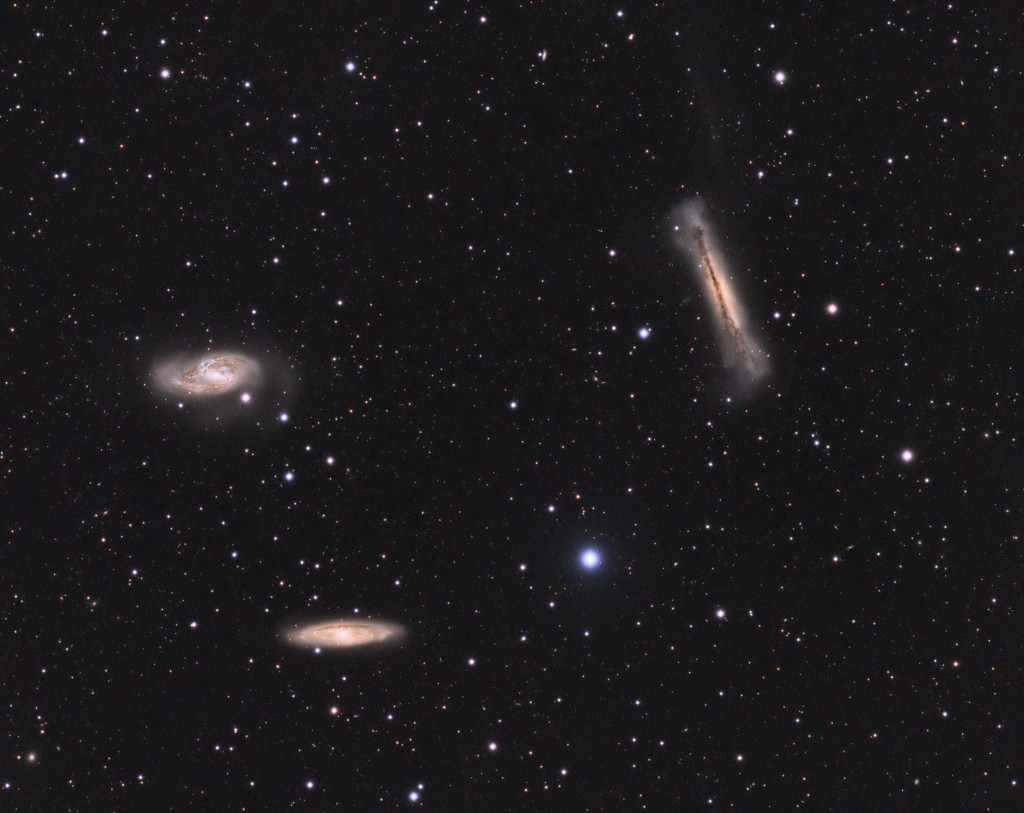
The Leo Triplet – M65, M66, & NGC 3628
Stellarvue SVQ 100, Apogee Ascent A694, AP900GTO Mount, Exposure 4 hours, SQM 21.48
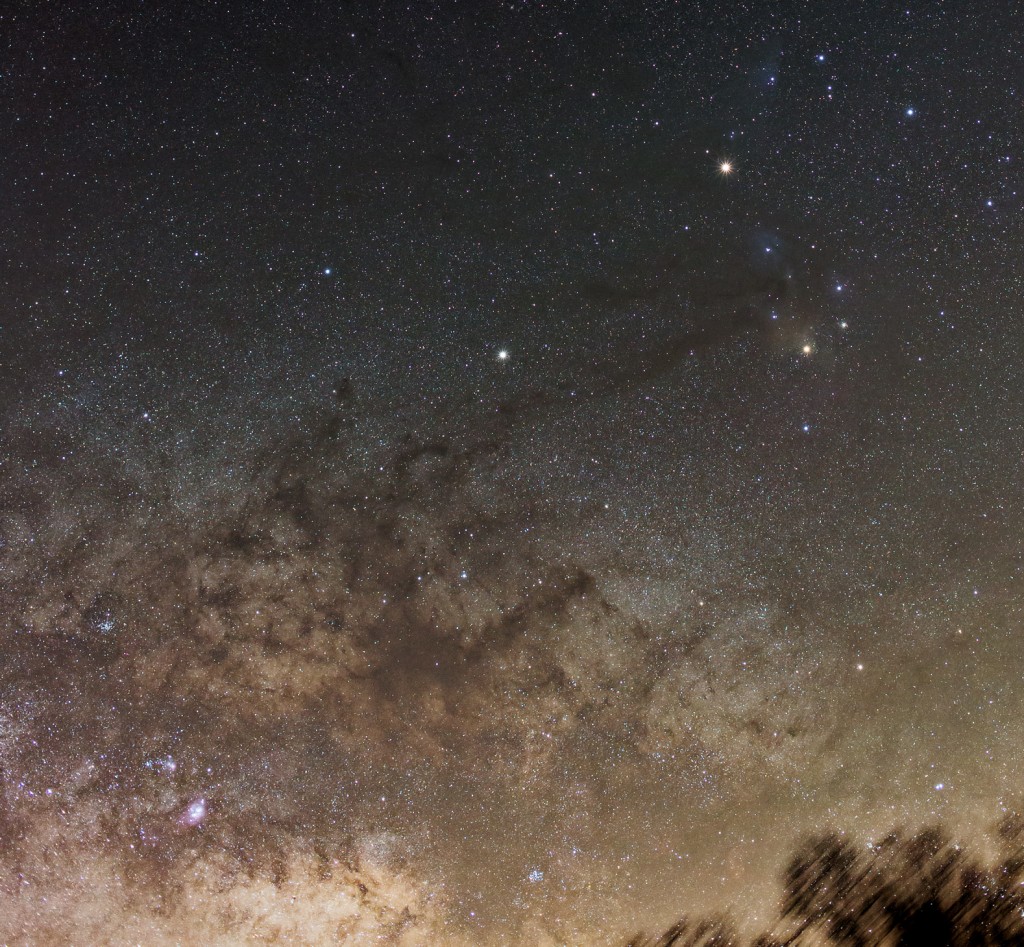
Rho Ophiuchi Cloud Complex stretching down to the Lagoon Nebula Canon 6D with 40mm f/4 ISO 1600 4min single exposure
My buddy and I drove up to Pickett State Park which recently was designated a Dark Sky Park by the International Dark Sky Association. The night wasn’t perfect; cold, little too windy, and high thin clouds to the south that at times mucked with our images. I had wanted to test out a new widefield camera tracker from StarSync LLC. Unfortunately, I forgot my intervalometer so I was limited to 30 second exposures which isn’t the best test. Still, I think it’s the tracker I’ve been waiting for. I love the design.
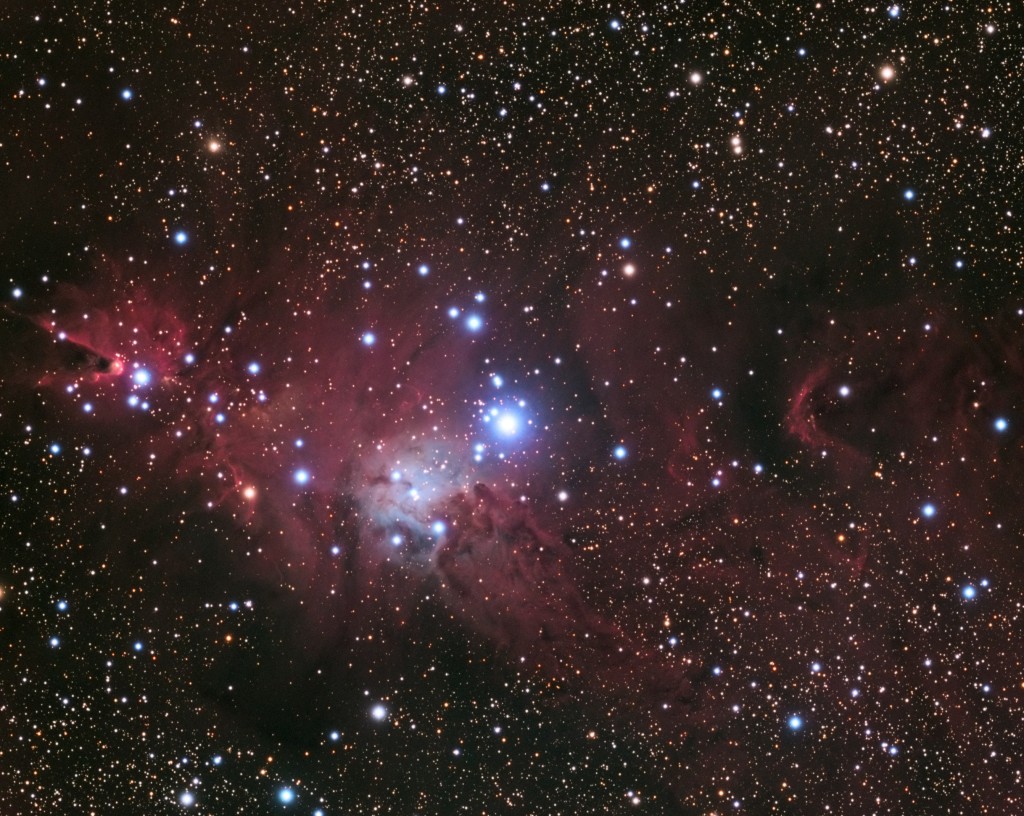
NGC 2264, Sh2-273: The Fox Fur and Cone Nebula. Taken with a Stellarvue SVQ100, Apogee Ascent A694 CCD, Atlas Mount, Baader LRGB Filters, Lodestar Autoguider CCD through an SX-OAG. Exposure time was 21x10min Lum, 6x10min each RGB. Sky brightness (SQM) ranged from 21.2 to 21.38 mag/arcsec^2.
This enigmatic formation of gas and dust lies in the constellation of Monoceros (the Unicorn) not far off the right arm of Orion. This is a close-up of a small section of a much larger complex, generally known as the Christmas Tree cluster. The mysterious Cone Nebula is also a part of this same cloud.
The red regions of this nebula are caused by hydrogen gas that has been stimulated to emit its own light by the copious ultraviolet radiation coming from the hot, blue stars of the cluster. The blue areas shine by a different process: they are mainly dust clouds that reflect the bluish light of the same stars.
Its popular name arises because the nebula looks like the head of a stole made from the fur of a red fox.
Information courtesy of Wikipedia.
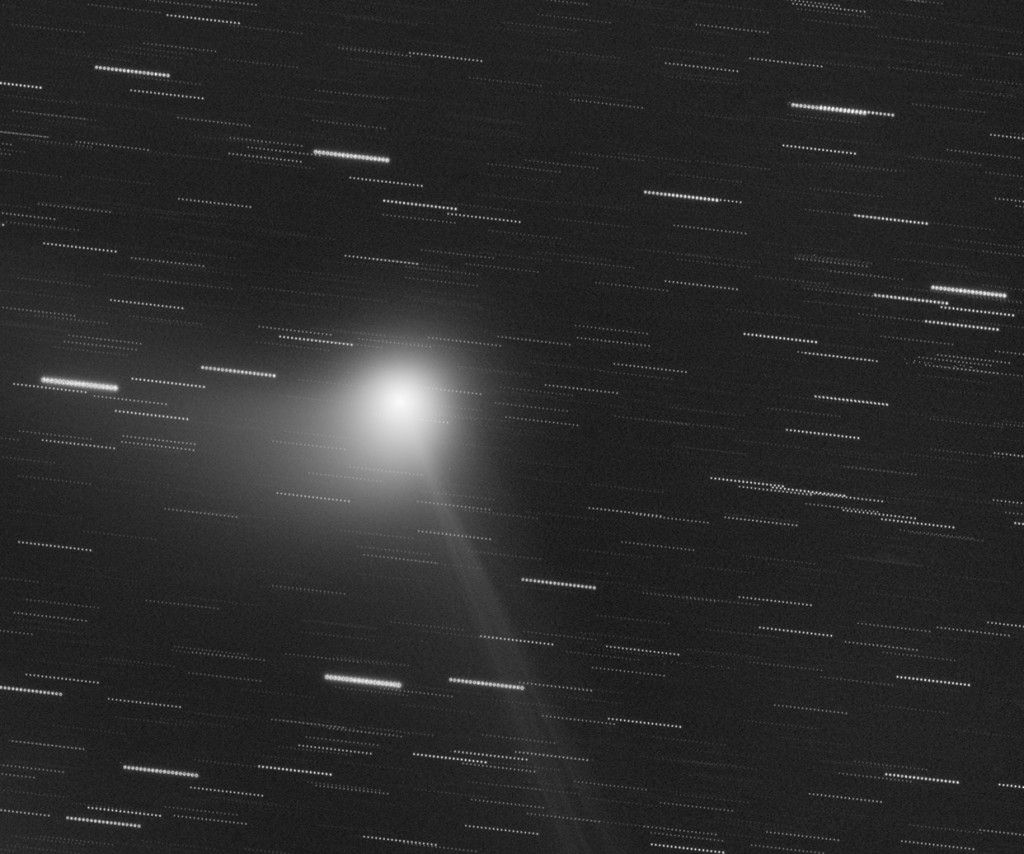
Comet C/2013 US10 (Catalina) Integration centered on the comet and showing the star trails as the comet moves relative to its celestial backdrop.
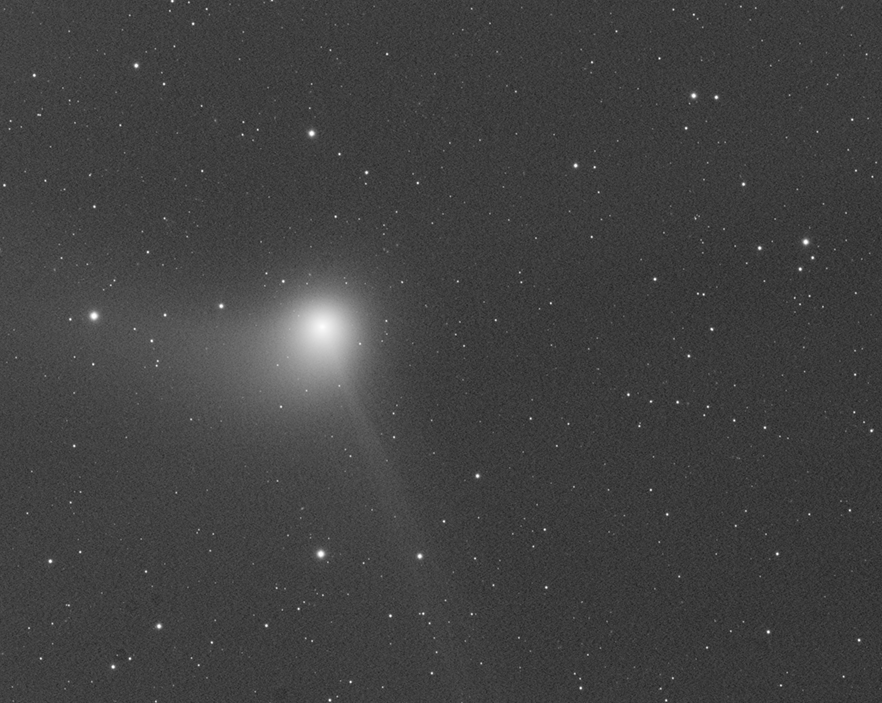
C/2013 US10 (Catalina) is an Oort cloud comet discovered on 31 October 2013 by the Catalina Sky Survey at an apparent magnitude of 19 using a 0.68-meter (27 in) Schmidt–Cassegrain telescope.[1] As of September 2015 the comet is around apparent magnitude 6.[6]
When discovered on 31 October 2013 observations from another object from 12 September 2013 were used in the preliminary orbit determination giving an incorrect solution that suggested an orbital period of only 6 years.[1] But by 6 November 2013 a longer observation arc from 14 August until 4 November made it apparent that the first solution had the wrong object from 12 September.[2]
By early May 2015 the comet was around apparent magnitude 12 and had an elongation of 60 degrees from the Sun as it moved further into the southern hemisphere.[7] The comet came to solar conjunction on 6 November 2015 when the comet was around magnitude 6.[6] The comet came to perihelion (closest approach to the Sun) on 15 November 2015 at a distance of 0.82 AU from the Sun.[3] At perihelion, it had a velocity of 46.4 km/s (104,000 mph) with respect to the Sun which is slightly greater than the Sun’s escape velocity at that distance. It crossed the celestial equator on 17 December 2015 becoming a northern hemisphere object. On 17 January 2016 the comet will pass 0.72 AU (108,000,000 km; 67,000,000 mi) from Earth and should be around magnitude 6[6] while located in the constellation of Ursa Major.
C/2013 US10 is dynamically new. It came from the Oort cloud with a loosely bound chaotic orbit that was easily perturbed by galactic tides and passing stars. Before entering the planetary region (epoch 1950), C/2013 US10 had an orbital period of several million years.[4] After leaving the planetary region (epoch 2050), it will be on an ejection trajectory.[4]
Information courtesy of Wikipedia.
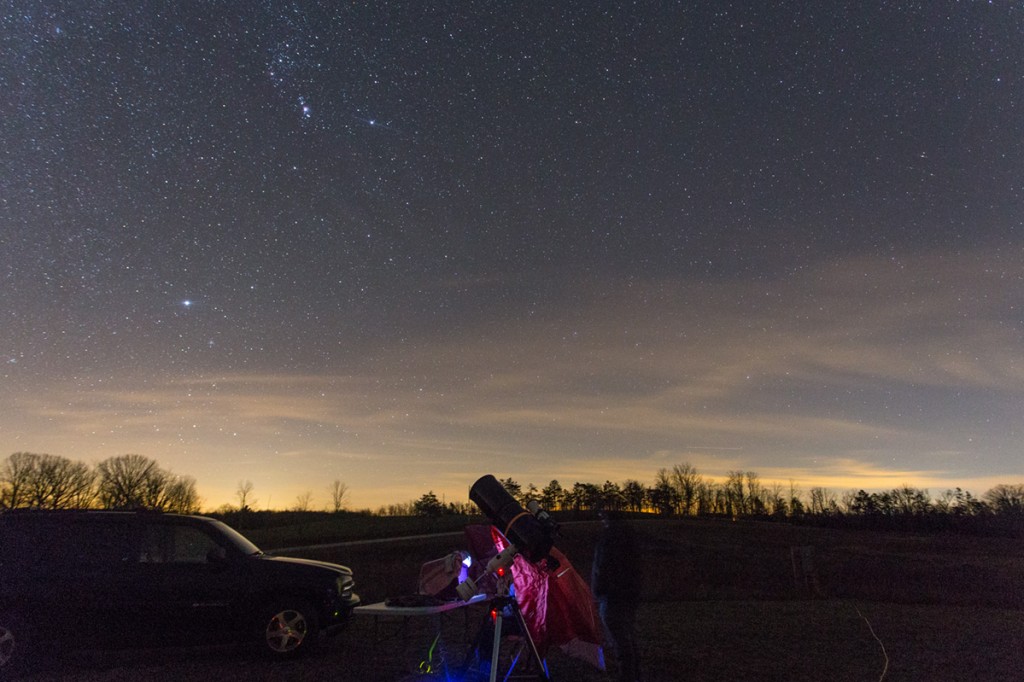
Thin clouds to the south lingered half of the night. 30 second exposure at 17mm FL, Canon 6D, tracked on StarSync Tracker. Orions belt and sword are prominent.
Taken 12/5/2015 from Cherohala Skyway, North Carolina. Sky quality was a little hazy early on and deteriorated by morning. SQM readings started around 21.1 and topped out around 21.2 mag/arcsec^2. This has always been a favorite object but I have always struggled processing it. It’s dim, it’s difficult, it always seems soft…. I’d prefer to shoot these dark dusty nebula from a darker site and if I ever get the chance I’ll be coming back to this object.
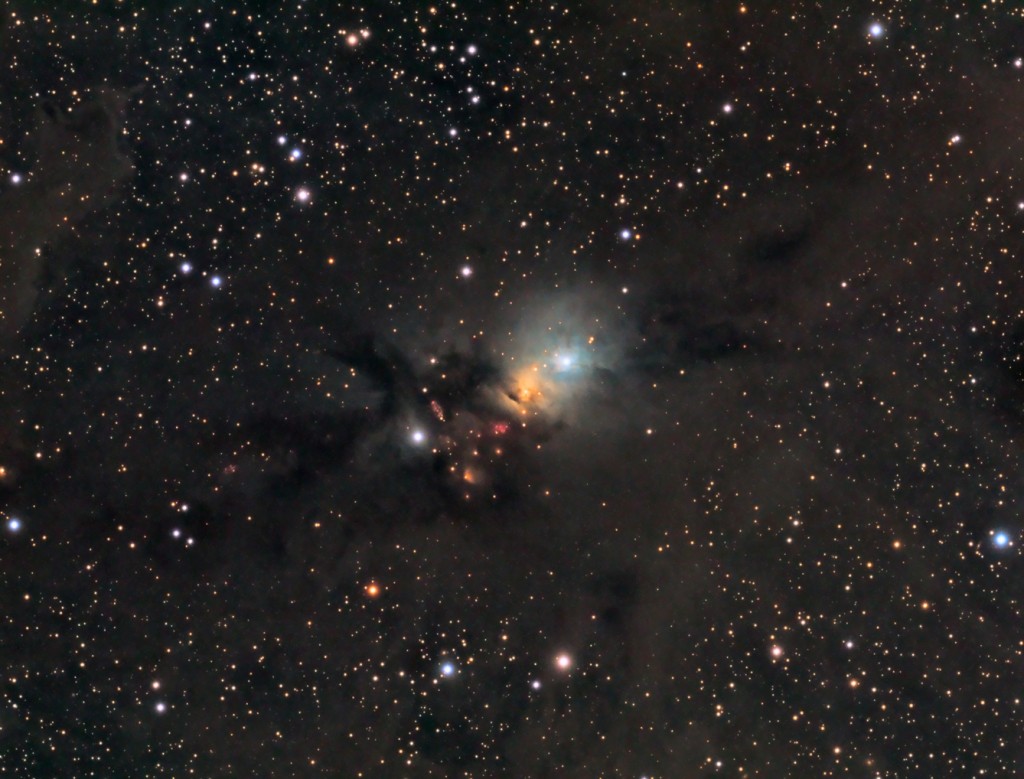
NGC 1333 Stellarvue SVQ100 100mm f/5.8 APO Apogee Ascent A694 CCD Atlas EQG Mount w/EQMOD SX-OAG w/ Lodestar Guider Baader LRGB Filters 21x10min Lum, 3x10x5min RGB Cherohala Skyway, NC SQM: 21.1-21.2
This was my first visit to Fall Creek Falls for the 2015 Tennessee Fall Star Gaze. It’s a casual get together held at a clearing within walking distance from the Inn. The site is reasonably dark measuring 21.42+ on Friday and 21.31 on Saturday after some thundershowers upped the humidity level. Both nights were good so long as you were prepared for dew.
I spent both nights gathering data on SH2-155; the Cave Nebula. It’s a fairly dark object and I’d like more than the 4.5 hours of exposure time I got on it but a couple technical issues coupled with the early moon rise limited my time….

SH2-155
AP130EDT f/8 reduced to f/6
AP900GTO3 Mount
Apogee Ascent A694 CCD
9x10min Lum
7x10min Red
6x10min Green
5x10min Blue
S 155, also known as the Cave Nebula, Sh2-155 or Caldwell 9, is a dim and very diffuse bright nebula within a larger nebula complex containing emission, reflection, and dark nebulosity. It is located in the constellation Cepheus.
Visually it is a difficult object, but with adequate exposure, makes a striking image. The nebula gets its name Cave Nebula from the dark lane at the eastern side abutting the brightest curve of emission nebulosity which gives the appearance of a deep cave when seen through a telescope visually.
Information Courtesy of Wikipedia
This was my first time to Fall Creek Falls and I was not sure what to expect in terms of amenities. For those of you considering going: Restrooms are a 1000+ ft walk from the site. There are no restrooms at the field, nor is there any power, water, etc. The only things available at the site are trashcans. The Inn, as I mentioned before, offers restrooms, along with buffet meals, vending machines, and accommodations on the lake.
It ended up being a gorgeous night at Norris. The MW was clearly visible and seeing looked reasonably good just based on the naked eye twinkle criteria.
I was able to gather a paltry 3x20min of O[III] and 2x20min of S[II] data on M8 (The Lagoon Nebula) to complete a tricolor Hubble Pallet image before it moved behind a tree….
The night started off hazy with a big halo around the 68.5% illuminated waxing moon. I wasn’t that optimistic about the high thin stuff clearing out so I threw the Lumenera monochrome high frame rate planetary camera on the scope instead of the usual deep sky camera and trained the scope on the moon for the public. I added a wireless game-pad so they could drive the mount around and check out different parts of the moon on their own and hopefully add to their enjoyment. After most of the guests had left I took a few videos and stacked them. Unfortunately, the laptop is not setup for planetary imaging; hard drive space is very limited on the small SSD and I had to move each AVI to a flash drive as I took them…
Luckily, it cleared up and the high thin stuff dissipated. I grabbed the deep sky camera and got to work on M16, The Eagle Nebuka, in Sagittarius.
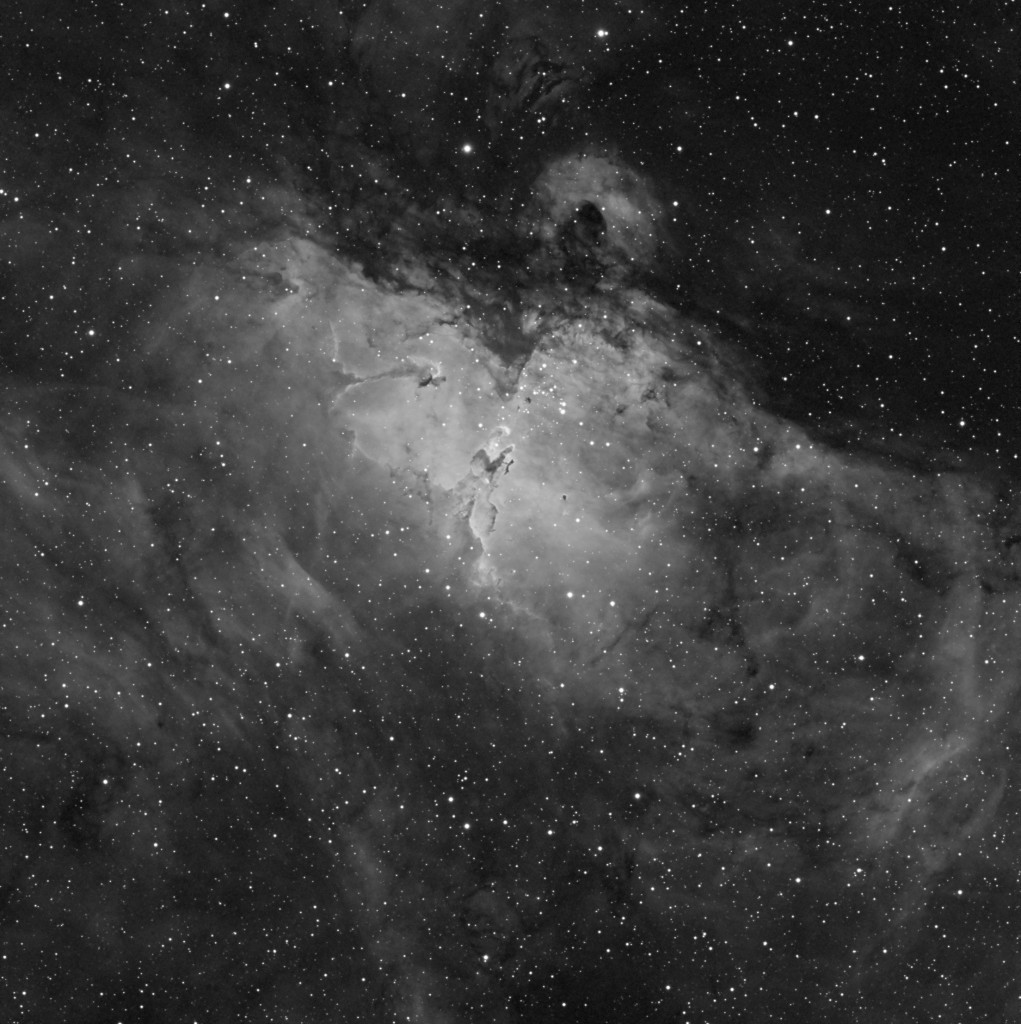
M16 – The Eagle Nebula
Taken with a Stellarvue SVQ100, Apogee Ascent A694, Atlas EQ-G Mount, Baader 7nm Ha Filter. Exposure time 8x20min.
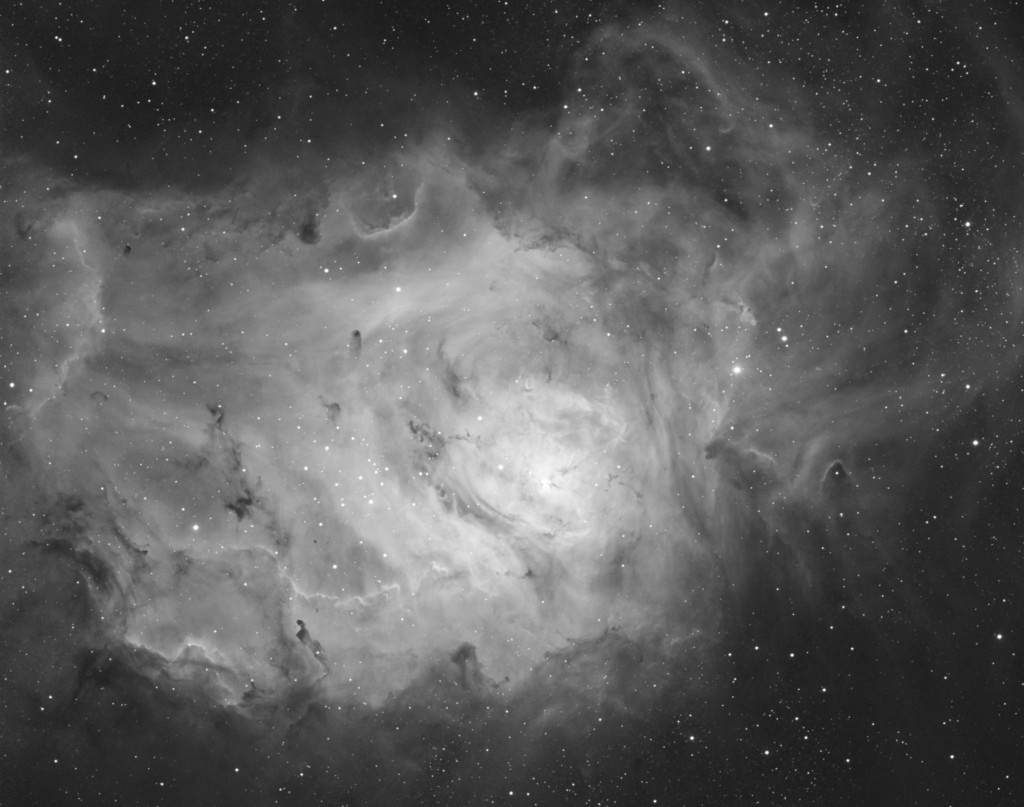
M8 – The Lagoon
Atlas EQ-G
Stellarvue SVQ100, Apogee Ascent A694
8x20min through a Baader Ha 7nm filter.
The Lagoon Nebula (catalogued as Messier 8 or M8, and as NGC 6523) is a giant interstellar cloud in the constellation Sagittarius. It is classified as an emission nebula and as a H II region.
The Lagoon Nebula was discovered by Giovanni Hodierna before 1654[4] and is one of only two star-forming nebulae faintly visible to the naked eye from mid-northern latitudes. Seen with binoculars, it appears as a distinct oval cloudlike patch with a definite core. In the foreground is the open cluster NGC 6530.
From Wikipedia, the free encyclopedia
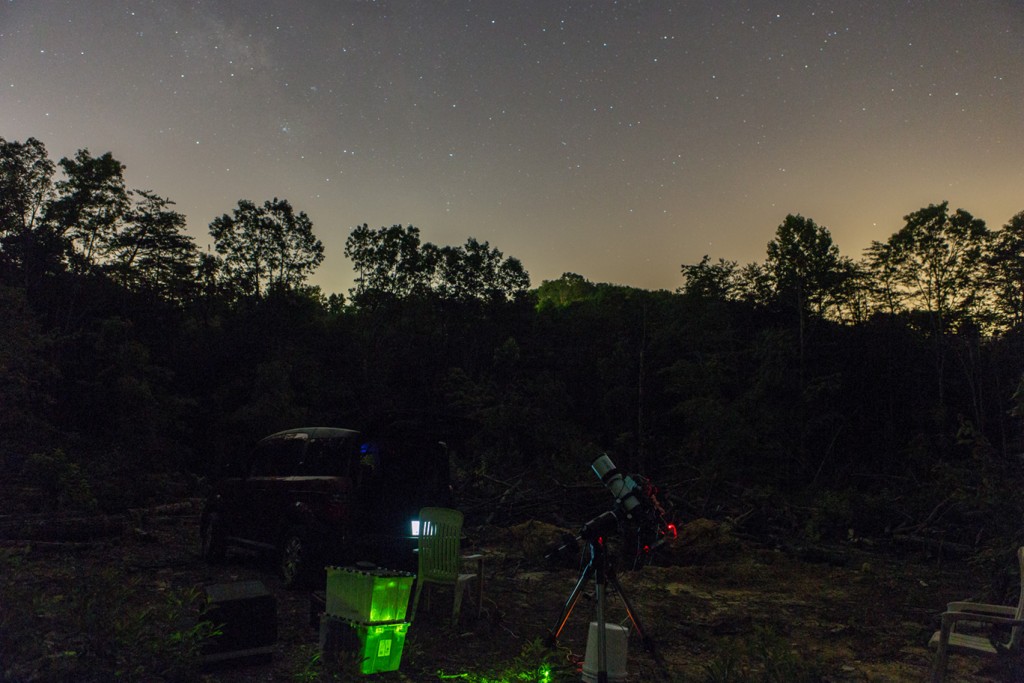
Future home observatory site looking south. The faint open cluster appearing on the left is M7 in Scorpius. Taken with a Canon 6D and 24-70mm f/2.8 at 24mm and f/4 for 20 sec at 1600 ISO.
Conditions were decent up until some clouds rolled in around 3:00am. There was a lot of lightning flashing to the north so I packed up a little early and headed back to the house. SQM measurements started around 20.2 but improved to 20.4 with a max of 20.5 around 1:00am.
The light pollution domes seen in the image are Oak Ridge to the south west (right side) and Clinton to the east/south east (left side).
